
About UsThe Numismatic Bibliomania Society is a non-profit association devoted to the study and enjoyment of numismatic literature. For more information please see our web site at coinbooks.org SubscriptionsThose wishing to become new E-Sylum subscribers (or wishing to Unsubscribe) can go to the following web page link MembershipThere is a membership application available on the web site Membership Application To join, print the application and return it with your check to the address printed on the application. Print/Digital membership is $40 to addresses in the U.S., and $60 elsewhere. A digital-only membership is available for $25. For those without web access, write to: Terry White, Treasurer AsylumFor Asylum mailing address changes and other membership questions, contact Terry at this email address: terrywhite5475@yahoo.com SubmissionsTo submit items for publication in The E-Sylum, write to the Editor at this address: whomren@gmail.com
BUY THE BOOK BEFORE THE COIN |
- WAYNE'S WORDS: THE E-SYLUM JANUARY 27, 2019
- NEW BOOK: GUIDE BOOK BARBER SILVER COINS 2ND ED.
- ROBINSON VIETNAMESE CASH COIN CATALOG
- NEW BOOK: BADISCHE MEDAILLEN (BADEN MEDALS)
- BANKNOTE BOOK PORTUGUESE INDIA CHAPTER
- NEW BOOK: NUMISMATIC FRIENDSHIP
- BOOK REVIEW: FORGOTTEN COLORADO SILVER
- PTOLEMAIC COINS ONLINE ANNOUNCED
- NEW PERIODICAL: RARE COIN STRATEGIES
- FIXED PRICE LIST: EARLY AMERICAN PAPER MONEY
- AUCTION SALE CATALOG COVERS AS ART
- BOSTON MASONIC TEMPLE ENGRAVED HALF DOLLARS
- LINCOLN PRINTING COMPANY COIN BOARDS SOLD
- NOTES FROM E-SYLUM READERS: JANUARY 27, 2019
- MAURICE FRANKENHUIS LETTER ON KARL GOETZ
- HOWLAND WOOD'S OMAR IBN SAID MANUSCRIPT
- VOCABULARY TERM: CAST MEDAL
- SAMUEL BARKER BOWLBY (1804-1864)
- HARVEY STACK'S NUMISMATIC FAMILY, PART 36
- INTERVIEW: COIN GRADING MOGUL JOHN ALBANESE
- THE R. B. WHITE CHINESE COPPER COIN COLLECTION
- HERMITAGE MUSEUM EAST TURKESKTAN COIN CABINETS
- CHICAGO INDUCTS RACKUS INTO HALL OF FAME
- MORE ON THE CHICAGO COIN CLUB 1,200TH MEETING
- GREATEST U.S. MINT COINS OF 2010-2019
- NUMISMATIC NUGGETS: JANUARY 27, 2019
- BUILDING THE NEW SAN FRANCISCO MINT
- 2019 RENO COIN CLUB MEDAL
- MORE ON THE NANYANG, CHINA MINT SITE
- THE DOLLAR IN REVOLUTIONARY AMERICA
- CANADA D-DAY COIN SOLDIER IDENTIFIED
- SECRET SERVICE SHUTDOWN CHALLENGE COIN
- HONG KONG BANKNOTE EXHIBIT
- WSJ ARTICLE ON COMMUNITY CURRENCIES
- LOOSE CHANGE: JANUARY 27, 2019
- FEATURED WEB PAGE: THE EVOLUTION OF BANKING
Click here to access the complete archive
Click here to unsubscribe (scroll down)
To comment or submit articles, reply to whomren@gmail.com
Content presented in The E-Sylum is not necessarily researched or independently fact-checked, and views expressed do not necessarily represent those of the Numismatic Bibliomania Society.
WAYNE'S WORDS: THE E-SYLUM JANUARY 27, 2019
 New subscribers this week include:
Harold Jones, courtesy of Mark Ferguson.
Welcome aboard! We now have 5,812 subscribers.
New subscribers this week include:
Harold Jones, courtesy of Mark Ferguson.
Welcome aboard! We now have 5,812 subscribers.
Thank you for reading The E-Sylum. If you enjoy it, please send me the email addresses of friends you think may enjoy it as well and I'll send them a subscription (but let me know if they are located in the European Union). Contact me at whomren@gmail.com anytime regarding your subscription, or questions, comments or suggestions about our content.
This week we open with five new books, a book review, and a new website, periodical and fixed price list - lots of great numismatic literature and information!
Other topics this week include Vietnamese cash coins, Lesher dollars, auction catalog cover art, the Boston Masonic Temple half dollars, Karl Goetz, Howland Wood, John Albanese, R. B. White, James Risk, cast medals, the San Francisco Mint building, Hong Kong banknotes and community currencies.
To learn more about Barber silver coinage, Baden medals, Chinese numismatics in the late eighteenth to the mid-nineteenth century, Ptolemaic coins, Lincoln Printing Company coin boards, the Eleanor Roosevelt $10 gold coin, and the 2001 Al Gore Inaugural medal, read on. Have a great week, everyone!
Wayne Homren
Editor, The E-Sylum
NEW BOOK: GUIDE BOOK BARBER SILVER COINS 2ND ED.
Dennis Tucker of Whitman Publishing forwarded this press release about the new edition of Dave Bowers' Guide Book of Barber Silver Coins. Thanks. -Editor
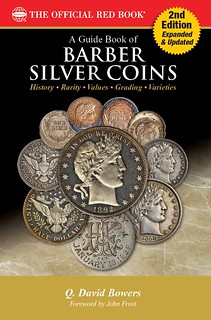 Whitman Publishing will release an enlarged, updated second edition of the Guide Book of Barber Silver Coins, by Q. David Bowers, in February 2019. The 400-page book, volume 20 in the popular Bowers Series of numismatic references, will be available from booksellers and hobby shops nationwide, and online (including at www.Whitman.com), for $29.95.
Whitman Publishing will release an enlarged, updated second edition of the Guide Book of Barber Silver Coins, by Q. David Bowers, in February 2019. The 400-page book, volume 20 in the popular Bowers Series of numismatic references, will be available from booksellers and hobby shops nationwide, and online (including at www.Whitman.com), for $29.95.
The second edition has been expanded by 16 pages. New features include a foreword by Barber Coin Collectors Society president John Frost; updated values (with price trends) for each coin; a gallery of remarkable error coins; newly revealed photographs and history from Charles Barber’s family archives; new historical images, including Barber coin love tokens; and an expanded index.
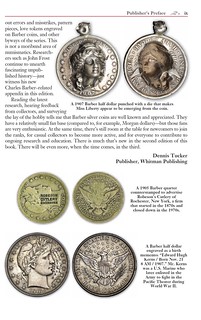
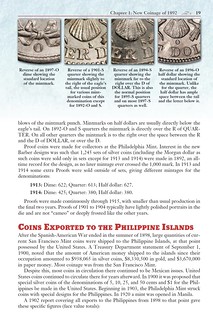
The subject of the book is the silver coinage—dimes, quarters, and half dollars—designed by U.S. Mint chief engraver Charles E. Barber and minted from 1892 to 1916. These were America’s workhorse coins of that era, remaining in circulation into the 1950s. At first criticized by the public, today Barber’s silver coins are among the most popular U.S. series, with many enthusiastic collectors and students. The Barber Coin Collectors Society is one of the hobby’s most active and fastest-growing specialty groups.
In the Guide Book of Barber Silver Coins Q. David Bowers shares insightful study by date and mintmark for every issue of the three denominations (277 major varieties), in-depth historical background, and detailed data analysis. His text is illustrated by more than 800 photographs, engravings, and other images. Bowers—the "Dean of American Numismatics" and the most prolific numismatic author of all time—tells collectors how to evaluate quality, determine value, understand the market, and make smart purchases to build significant collections. He takes the reader on a journey through what he calls "the most interesting and evolutionary period in American history," from the Gilded Age through the Progressive Era.
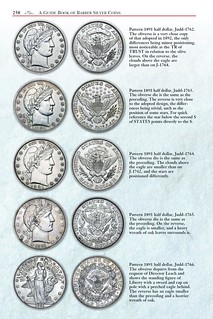
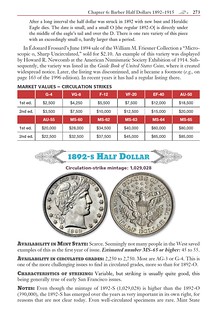
Bowers provides a wealth of information including mintages, date-by-date estimates of the total number of pieces existing for both circulated and Proof issues, illustrated grading standards, values in up to 12 grades, and keys to collecting based on availability and sharpness of strike. Year-by-year historical background details the landscape of American life (and the state of the coin-collecting hobby) in the time of the coins’ design and production.
The second edition of Guide Book of Barber Silver Coins includes "A New Look at Charles Barber," by John Frost, which publishes Barber family photographs and other archives recently revealed. This information corrects many popular misconceptions about Charles Barber, his personal life, and his relationships with George T. Morgan and President Theodore Roosevelt. Bowers also explores the mints, Mint directors, and Mint superintendents responsible for Barber coinage; the story of the fabled 1894-S Barber dime; and off-center Barber coins and other rare and valuable errors.
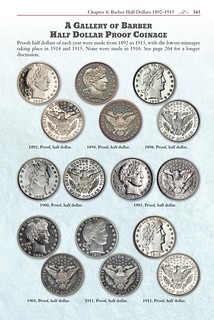
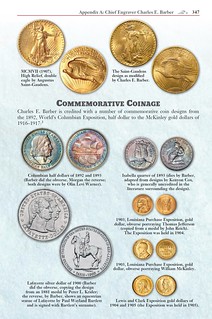
Kenneth Bressett, Editor Emeritus of the Guide Book of United States Coins, calls the book "a landmark account touching on every aspect of Charles Barber’s fascinating coins."
A Guide Book of Barber Silver Coins, 2nd edition
By Q. David Bowers; foreword by John Frost
ISBN 0794846386 · 6 x 9 inches, softcover, 400 pages, full color · Retail $29.95 U.S.
For more information, or to order, see:
https://www.whitman.com/store/Inventory/Detail/A-Guide-Book-of-Barber-Silver-Coins-2nd-Edition+0794846386

ROBINSON VIETNAMESE CASH COIN CATALOG
Frank Robinson is a longtime dealer in ancient and world coins, and author of the book Confessions of a Numismatic Fanatic: How to Get the Most Out of Coin Collecting. He's compiled a catalog of his personal collection of Vietnamese cash coins for sale - here's the press release. Printed copies of the catalog are available. -Editor
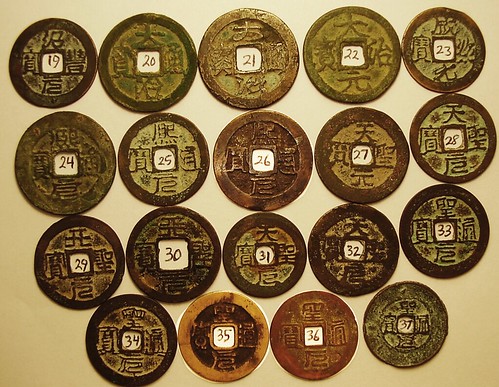
Dealer Frank S. Robinson, of Albany, NY, will sell his personal collection of Vietnamese cash coins in an auction closing March 17. The collection, assembled over nearly half a century, comprises 383 different coins, including many rare and choice pieces. They will be offered individually, with an option to bid for the entire collection.
Vietnamese square-holed cash coinage began in the Tenth Century and ended in the 1926-45 reign of Emperor Bao Dai — the world’s last cast cash coinage.
The sale, with every coin photographed, will be found at www.fsrcoin.com/Vietnamcash.html. The website (which will remain accessible after the sale ends) should also serve as a useful catalog of Vietnam cash coins. It cross references several other published works (Schjöth, Toda, Barker, Novak, Craig/Krause, and Miura Gosen).
Hard copies are also available from Robinson at Box 8600, Albany, NY 12208, phone 518-482-2639; e-mail frank@fsrcoin.com.
To read the complete catalog online, see:
http://www.fsrcoin.com/Vietnamcash.html
NEW BOOK: BADISCHE MEDAILLEN (BADEN MEDALS)
The January 24, 2019 issue of CoinsWeekly (in an article by editor Ursula Kampmann) alerted me to the publication (in German) of a new book on the medals of the German state of Baden. Here's a machine-generated English translation via Google of the publisher's description. -Editor
 The conversion of the map of Europe by Napoleon made until the summer of 1806 from the unified margraviate Baden a colorful, much larger state on the Upper Rhine, the Grand Duchy of Baden. All numismatic testimonies of these newly united villages and estates are gathered here and can be found in alphabetic order from A to Nursing Homes to Z like rooms. Around 600 medals and pilgrimage signs from the Renaissance to Classicism give a dazzling mosaic of the complex history of Baden.
The conversion of the map of Europe by Napoleon made until the summer of 1806 from the unified margraviate Baden a colorful, much larger state on the Upper Rhine, the Grand Duchy of Baden. All numismatic testimonies of these newly united villages and estates are gathered here and can be found in alphabetic order from A to Nursing Homes to Z like rooms. Around 600 medals and pilgrimage signs from the Renaissance to Classicism give a dazzling mosaic of the complex history of Baden.
The river of history is marked by world-changing events, but also contains regional concerns that have not made waves internationally. But they too belong to the cultural history of humanity and were given medals. On the one hand, there are pieces on the execution of the reformer Johannes Huss in Constance in 1415 or on the birth of the Habsburg heir to the throne in 1716, but on the other hand also award medals for special achievements at the Gymnasium Durlach or for the second most beautiful mare of Fürstenberg.
For the first time the Baden medals and pilgrimage signs are so completely assembled here. The enlarged pictures open windows into the eventful history of the Upper Rhine, a central region of Europe.
Joachim Zeitz, Badische Medaillen. Schaumünzen dokumentieren dreihundert Jahre oberrheinische Geschichte bis 1806.
Michael Imhof Verlag, 2018.
Language: German
603 pp., fully illustrated in color.
Hardcover. 24.7 x 5.1 x 32 cm.
ISBN: 978-3-7319-0400-7
For more information, or to order, see:
Badische Medaillen
(https://www.imhof-verlag.de/badische-medaillen.html)
Badische Medaillen: Schaumünzen dokumentieren dreihundert Jahre oberrheinische Geschichte bis 1806 (Studien zur internationalen Architektur- und Kunstgeschichte)
(https://www.amazon.de/Badische-Medaillen-oberrheinische-internationalen-Kunstgeschichte/dp/3731904004)
To read the CoinsWeekly article, see:
A Declaration of Love to the Medals from Baden
(https://www.coinsweekly.com/en/News/A-Declaration-of-Love-to-the-Medals-from-Baden/4?&id=5851)

BANKNOTE BOOK PORTUGUESE INDIA CHAPTER
Owen Linzmayer publishes The Banknote Book, a useful, constantly updated electronic reference. On January 25, 2019 he announced via email the availability of the chapter on the banknotes of Portuguese India. -Editor
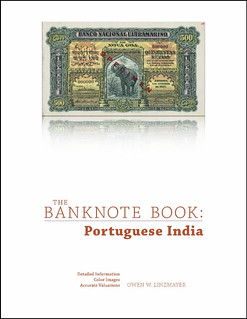 We're pleased to announce that the Portuguese India chapter is now available for individual sale and as a free download to subscribers.
We're pleased to announce that the Portuguese India chapter is now available for individual sale and as a free download to subscribers.
Portuguese India (South Asia)
This 22-page catalog covers notes issued by the Junta da Fazenda Publica (Department of Public Finance) in 1882, Governo Geral do da India (General Government of the State of India) from 1896 to 1899, and Banco Nacional Ultramarino (National Overseas Bank) from 1906 to 1959. Published 23.01.2019.
Currently 276 chapters of The Banknote Book have been published as individual high-resolution PDF files. This represents a total of 5,308 pages covering 49,144 types and varieties.
For more information on The Banknote Book, see:
http://www.banknotenews.com/banknote_book/banknote_book.php
NEW BOOK: NUMISMATIC FRIENDSHIP
Lyce Jankowski of the Université Paris-Diderot submitted this announcement of her new book on Chinese numismatic scholarship in the first half of the nineteenth century. Congratulations! -Editor
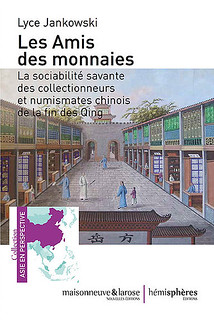 I am pleased to announce the publication of Les Amis des monnaies, la sociabilité savante des collectionneurs et numismates chinois de la fin des Qing ([Numismatic Friendship - Social Networks of Numismatists and Coin Collectors during the late Qing Dynasty] (Paris: Hémisphères Maisonneuve & larose, 2018).
I am pleased to announce the publication of Les Amis des monnaies, la sociabilité savante des collectionneurs et numismates chinois de la fin des Qing ([Numismatic Friendship - Social Networks of Numismatists and Coin Collectors during the late Qing Dynasty] (Paris: Hémisphères Maisonneuve & larose, 2018).
Coin collections started in China during the sixth century AD, nearly one millennium before the first numismatic manuscript in the Western world was published. The curiosity for coins continued growing during the following centuries, even under foreign imperial rules. In the middle of the eighteenth century, the Emperor Qianlong possessed the most comprehensive collection including an example of all the coins cast in East Asia since the seventh century BC. Coins were also carefully collected and studied by scholars, who between them developed a 'numismatic friendship'.
The period from the late eighteenth to the mid-nineteenth century constitutes a golden age for Chinese numismatics. Following the publication in 1751 of the Qinding qianlu (The Imperially Ordered Catalogue of Coins), many collectors became interested in coins and engaged themselves in publishing catalogues, monographs, or other studies. These publications using the methods employed in literature by ‘Evidential studies’ (kaozhengxue), were highly influential in changing numismatics scholarship.
This book guides us into the world of collections and collectors in China by following a group of scholars, who had a passion for epigraphy and numismatics during the first half of the nineteenth century. Some of them are famous scholars and collectors, such as Chen Jieqi or Wu Dacheng. Others are collectors, who are less well known but made crucial contribution to the study of Chinese material culture. Last, this book explores the community of antiques dealers, rubbing makers and even forgers, showing the complex social network that linked all these people together.
The book is an edited version of her PhD thesis, which was awarded the Quadriennal Prize of the Royal Numismatic Society of Belgium. The publication was also rewarded at the end of last year with the F. Blanchon Prize of the French Academy.
The United States is a young country, as nations go. Coin and medal collecting was a rare and individual pursuit in the early days of the republic, not taking off until the mid-1800s. We draw our influences from Europe, and there numismatics had been known as "the hobby of kings" for centuries. This book pushes the origins of coin collecting back much farther. Its publication coincides with numismatic zeal in China greater than it has been in generations, with Chinese coins bringing world-record prices at auction. This book will likely be a welcome addition to the literature of the study of numismatics. -Editor
Lyce Jankowski is an art historian specializing in the numismatics of East Asia. She has taught the history of Chinese art at the Sorbonne University (Paris IV) and numismatics at the University of Oxford. Trained in Classics and History of Art at the Sorbonne University, in Sciences of Antiquity at the Ecole Normale Supérieure and in Chinese at the National Institute of Oriental Languages and Civilizations, her main research interest is the history of Chinese art collections.
For more information, or to purchase a copy, see:
https://www.hemisphereseditions.com/les-amis-des-monnaies
THE BOOK BAZARRE
BOOK REVIEW: FORGOTTEN COLORADO SILVER
Dennis Tucker submitted this excellent review of Bob Leonard's recent book on Lesher Dollars. Thank you! -Editor
Exploring Colorado’s Rare Forgotten Silver
Book review by Dennis Tucker
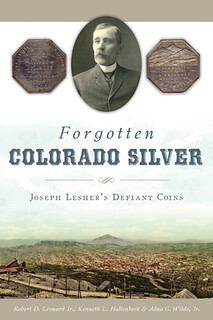 Lesher Referendum Dollars have been part of the Guide Book of United States Coins — the
hobby’s perennially popular "Red Book"—since 1957. That year, in the 11th edition, the
"dollars" (so called, but actually privately issued tokens, and not really legal tender) were
described thus:
Lesher Referendum Dollars have been part of the Guide Book of United States Coins — the
hobby’s perennially popular "Red Book"—since 1957. That year, in the 11th edition, the
"dollars" (so called, but actually privately issued tokens, and not really legal tender) were
described thus:
"Coined by Joseph Lesher in 1900 and 1901 at Victor, Colorado. Used in trade to some extent, and stocked by various merchants who redeemed them in goods. Coins were numbered and a blank space left at bottom of 1901 issues, in which were stamped names of businessmen who bought them. All are quite Rare, many varieties extremely Rare."
This text was accompanied by a black-and-white photograph of the obverse of a 1900 piece and the reverse of a 1901, and retail valuations in two grades (Very Fine and Uncirculated) for fourteen types and varieties.
Oh, to be able to go back 60 years and scoop up these numismatic delicacies at those low, low 1957 prices!
The most affordable Lesher Referendum Dollar in 1957, the 1900 A.B. Bumstead, was listed at $65 in Very Fine and $100 in Uncirculated. The most expensive, the 1901 Goodspeeds & Co., was $300 in Very Fine and $450 in Uncirculated.
Collectors who look at everything in bottom-line terms might wonder how much $450 invested in the stock market in 1957 would be worth today. But not everything needs to be boiled down to money. Part of the value of owning a Lesher Referendum Dollar is the opportunity to hold in your hand a rare piece of American history and marvel at its strange birth and 100-plus–years’ journey.
Still, for those who are counting: Prices for Lesher Referendum Dollars quickly increased over the years following their first inclusion in the Red Book. Today the Bumstead variety is listed at $1,600 in Very Fine and $4,000 in Uncirculated. The Goodspeeds version? $27,000 in Very Fine and $47,000 in About Uncirculated, with fully Uncirculated examples now considered too rare to be definitively priced.
Publication in the Red Book gave the Lesher Referendum Dollars the widest publicity the elusive silver tokens had ever enjoyed. By 1959 coin collectors were buying 100,000 copies of the book annually, and in 1964, during the peak of a modern coin-mania in the United States, the 18th edition alone would sell more than 1,200,000 copies. However, the Red Book wasn’t the first place where the experimental silver pieces were studied by numismatists. Farran Zerbe had interviewed Joseph Lesher, the man behind the Referendum Dollars, and he wrote a seminal exploration of the tokens in a 1918 article in the American Journal of Numismatics. A few other researchers wrote and lectured about them in the decades that led up to their publication in the Red Book. Later, in 1978, The Numismatist, the official magazine of the American Numismatic Association, published Adna G. Wilde Jr.’s important study, "Lesher Referendum Dollars: Where Are They Today?"
Still, for sixty years the average coin collector’s exposure to Lesher Referendum Dollars was their one-paragraph definition in the back of the Red Book, a couple photographs (upgraded to full color in later editions), and a chart of their values in different varieties.
The landscape changed, and quite substantially, in 2017.
That’s the year numismatic researcher and author Robert D. Leonard Jr., along with Colorado Springs coin dealer and hobby leader Kenneth L. Hallenbeck, released Forgotten Colorado Silver: Joseph Lesher’s Defiant Coins. The late Adna Wilde, who passed away in 2008, was credited as a third author of the 128-page book, for his foundational work in the field.
In five introductory chapters, Leonard and Hallenbeck lay out the history of these fascinating tokens, starting with the rise of the Cripple Creek Mining District in the late 1800s.They delve into constitutional questions of legal tender, and the right to coin money, that the early United States wrestled with as all sovereign nations do. Private (non-governmental) coinage, the American Civil War, the German Empire’s massive dump of silver in the 1870s (after adopting the gold standard), the Free Silver movement, and Congress’s silver-related boondoggles and hijinks of the era all set the stage for chapter 3—"Joseph Lesher: Pioneer, Promoter and Minter."
Joseph Lesher was a character, as one might expect of someone audacious enough to try to mint his own private silver coins in 1900. That was more than thirty-five years after the federal government explicitly outlawed private production of "any coins of gold or silver or other metals" for use as money. He was a volunteer Civil War veteran who later tried to milk his military service for as much government pension as he could finagle (claiming "senile disability" and physical ills despite his active engagements in real estate, prospecting, mining, and other endeavors).
"Joseph Lesher would be little known today," write Leonard and Hallenbeck, "but for his one great success: he minted his own coins and put them into circulation, notwithstanding the Act of June 8, 1864. He decided that if the Treasury wouldn’t buy any more silver to coin into dollars, then he would. . . . And even the U.S. Secret Service couldn’t stop him."
What inspired this effort? In chapter 4 the authors describe the situation faced by Colorado after 1893, when Congress repealed the Sherman Silver Purchase Act of 1890. This act had been a very generous congressional gift—a subsidy to Western mining interests. It required the Treasury to buy 4.5 million ounces of silver every month to be coined into dollars. This accounted for almost 100 percent of the nation’s silver production. After the Sherman money dried up, the precious metal’s artificially high price plummeted, leaving the Silver State’s miners scrambling. Various private interests, and even state politicians (right up to the governor!), floated various hairball schemes to start a silver-based Colorado coinage that would keep demand high and the local mines running. Of course, the federal government’s 1864 prohibition of such coinage was a roadblock. Leonard and Hallenbeck tell how Joseph Lesher started his
coining operation, and how local businesses, newspapers, the U.S. District Attorney’s office, the Treasury Department, the Patent Office, coin collectors, and eventually the Secret Service reacted to the exploit.
For readers hungry for more than those few sentences in the Red Book, this historical information alone is worth the price of Forgotten Colorado Silver!
The authors provide much more, after having laid the foundation with the Referendum Dollars’ history. Their study of dies, mintages, and surviving populations builds on the research of Farran Zerbe. Robert Leonard went not only to Zerbe’s 1918 American Journal of Numismatics catalog but also to an unpublished, corrected version of Zerbe’s manuscript from 1934. He lays out discoveries of the 1930s and later research, and tells what happened to each of the dies used to produce the tokens (including some seized by the Secret Service, and some presumed to have been discarded by Lesher’s widow). He gives evidence of the total mintage calculated by Adna Wilde, who, after exhaustive study, accounted for 1,869 pieces struck in total. And he updates the known quantity of survivors—thought by Wilde to be 384 pieces, but now numbering about 600.
The quantity of roughly 600 known examples leaves about 1,200 pieces missing in action. Chapter 6 is devoted to the confusion and legends that have sprung up around rumors of a treasure or hoard of Lesher Referendum Dollars stored in coffee cans (or salt-pork tins). Could the 1,200 or so unaccounted-for pieces be hidden somewhere in a basement or attic in Colorado? It’s enough to set a treasure-hunter’s heart pounding—especially with each "lost coin" being worth at least a couple thousand dollars! Leonard does some serious myth-busting (for example, pointing out that salt pork in the early 1900s wasn’t canned but was shipped dry in kegs or sacks). Even so, ultimately he leaves the idea of a hidden treasure tantalizingly open. Says coauthor Hallenbeck, who has studied and dealt in these tokens since the 1970s: "The possibility of the tin can full of Lesher dollars might actually have been a reality."
The rest of the book is a rich biographical study of each of the agents, merchants, and businessmen who bought into Joseph Lesher’s plan for private silver coins. These partners were intended to be the backbone of his enterprise, the network through which his tokens would be issued, accepted as cash, paid out in change, and ultimately redeemed by Lesher as their backer. (In reality the Referendum Dollars never took off as a private currency. Most of them were actually bought by tourists and coin collectors as Western souvenirs and novelties.)
The authors dig into the stories of A.B. Bumstead, a popular grocer in Victor, Colorado . . . the jeweler Sam Cohen . . . shoemaker George McMullen . . . saloonkeeper D.W. Klein . . . and about a dozen other Lesher supporters. It’s clear that a huge amount of labor went into this research. Much of it was based on the work of amateur historian Robert S. Kincaid, who started exploring the Lesher dollars in 1984 and eventually hired a genealogist, photographers, and other researchers to aid in the project. Robert Leonard carried this work to its completion, examining related Secret Service papers in the archives of the American Numismatic Society, and verifying and expanding Kincaid’s genealogical research.
Among the issuers of Lesher Referendum Dollars, you’ll find one who lies buried in the same cemetery as Mickey Rooney; one who spent time in an insane asylum; one who worked as a "legal adjuster" for a traveling circus; one with an airport named for his wife. One of the jewelers supervised his store from an easy chair on the balcony. One merchant ended his life as a poultry farmer. Another vanished and was never seen again! One assaulted a co-worker with a paperweight; one prospected for uranium; one died a pauper; another filed to divorce his wife on grounds of "cruelty and desertion."
This research explains why certain types and varieties of Lesher Referendum Dollars are rarer than others. It also gives numismatists the meat and potatoes we love: stories of real people, flesh and blood, that connect the coins of the past to our lives today.
For the generations of coin collectors who have tasted the Red Book’s "appetizer" coverage of Lesher Referendum Dollars and hungered for more: now you have it. Forgotten Colorado Silver is a delightful numismatic feast, served up with authority and panache, highly recommended.
Forgotten Colorado Silver: Joseph Lesher’s Defiant Coins
Robert D. Leonard Jr., Kenneth L. Hallenbeck, and Adna G. Wilde Jr.
Published by The History Press, Charleston SC; © the authors
128 pages, softcover, illustrated, $21.99 retail
ISBN 9781467135252
Thanks, Dennis! I LOVE the book's subtitle; Joseph Lesher’s Defiant Coins. "Defiant" is a great word. That the Lesher dollars exist is as much about politics as economics. But are these tokens or medals? They indeed have a denomination and were intended for use in commerce. But as Dennis noted they never took flight as an actual private currency. They have much in common with Bryan Money, satirical medals of the day used to fan the flames of political discourse - the tweets and retweets of the day.
Here's a shout-out to Bob Kincaid, who as Dennis mentioned laid a lot of the early groundwork for Lesher research, diving deep into the newspapers of the day back in the pre-internet era when this required intense labor in archives and at microfilm readers deep in the bowels of libraries. Bob did similar pioneering work researching issuers of U.S. encased postage stamps, leading to the standard book on the topic by Fred Reed. I was a contributor to that one, working at Fred and Bob's direction at the New York Public Library, the New-York Historical Society, and elsewhere.
Bob Leonard's book is excellent, and I encourage readers to get a copy - see the earlier articles for more information. -Editor
To read the earlier E-Sylum articles, see:
NEW BOOK: FORGOTTEN COLORADO SILVER
(http://www.coinbooks.org/v20/esylum_v20n25a03.html)
BOOK REVIEW: FORGOTTEN COLORADO SILVER
(https://www.coinbooks.org/v20/esylum_v20n29a05.html)
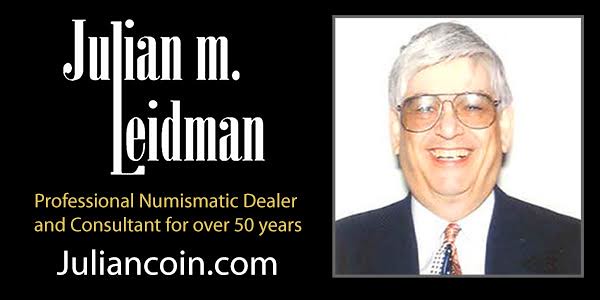
PTOLEMAIC COINS ONLINE ANNOUNCED
This press release announces a new online resource from the ANS on Ptolemaic coins. -Editor
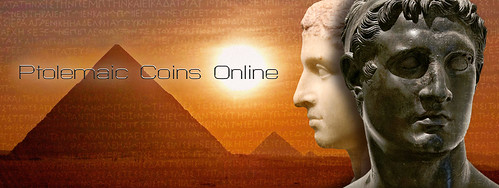
The American Numismatic Society (ANS) is pleased to announce the release of a new web-based research tool: Ptolemaic Coins Online (PCO). As part of the National Endowment for the Humanities-funded Hellenistic Royal Coinages project, PCO is a new research tool intended to provide wide access to the coins listed in the print volumes of Coins of the Ptolemaic Empire by Catharine C. Lorber, the first attempt to provide a new, comprehensive standard typology and catalogue for the coinage produced by the Ptolemaic dynasty of Egypt since Ioannis Svoronos’s Τα νομίσματα του κράτους των Πτολεμαίων published in 1904–1908.
Published by the American Numismatic Society, Coins of the Ptolemaic Empire will eventually appear in four parts: Volume I appeared in October 2018 covering the gold and silver coinage (Part I) and bronze coinage (Part II) of Ptolemy I (r. 323–282 BC) through Ptolemy IV (r. 221–204 BC). Volume II covering the gold and silver coinage (Part I) and bronze coinage (Part II) of Ptolemy V (r. 203–181 BC) through Cleopatra VII (r. 51–30 BC) is expected to appear in print by 2020. The current version of PCO, released in December 2018, covers the coinage found in Volume I, Part I of Coins of the Ptolemaic Empire; in early 2019 PCO will be updated to include the coins found in Volume I, Part II. Subsequent updates to PCO will occur when Volume II of Coins of the Ptolemaic Empire is released.
While the Ptolemaic coins in the ANS collection (some 3,371 pieces) will ultimately serve as the core of the searchable catalogue, a continuing effort will be made to illustrate all types in the database. The current version of PCO includes 990 types, 429 (43%) of which are illustrated by at least one specimen from ANS, the British Museum, the Munzkabinett der Staatliche Museen zu Berlin, the State Coin Collection of Munich, Harvard Art Museums, and the Fralin Museum of Art (University of Virginia). Ultimately, additions specimens will be added with links to coins in the Bibliothèque nationale de France and other public and private collections.
Along with Seleucid Coins Online (numismatics.org/sco) and PELLA (numismatics.org/pella), which currently focuses on the coinage in the name of Alexander the Great, PCO further expands the coverage of typologies and material available through the Hellenistic Royal Coinages project. In the near future additional resources devoted to the coinages of other royal dynasties will be added along with resources devoted to the hoard finds of Hellenistic coinages and the monograms found on many of the series.
To visit Ptolemaic Coins Online, see:
Ptolemaic Coins Online
(http://numismatics.org/pco/)
To read the complete press release, see:
Announcing Ptolemaic Coins Online
(http://numismatics.org/pco-pr/)
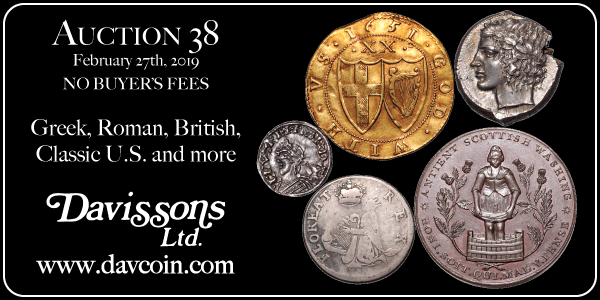
NEW PERIODICAL: RARE COIN STRATEGIES

Here's the press release for a new periodical from Mark Ferguson's Numisma Publishing. -Editor
Newsletter for Collectors Featuring America’s Top Experts
Numisma Publishing is pleased to announce the publication of a monthly newsletter for collectors: Rare Coin Strategies. The mission of the newsletter is to help collector-investors become more skilled at building a successful collection. America’s top numismatic experts are sought out to provide expert guidance. Collector stories will also be featured – from common, everyday collectors to award-winning registry collectors.
Each monthly issue of Rare Coin Strategies is printed and mailed at a modest subscription rate of just $39 per year. Issue #1 is available for free by PDF download from the publication’s website: www.RareCoinStrategies.com. This issue includes informative and entertaining articles from experts such as: Jeff Garrett, Past President of the American Numismatic Association and Senior Editor of A Guide Book of United States Coins; David Beahm, CEO of Blanchard & Company; Brian Kendrella, President of Stack’s Bowers Galleries; and Kimberly Kiick, Executive Director of the American Numismatic Association. Editor/Publisher Mark Ferguson also interviewed John Albanese, a founding member of each of the "Big Three" coin grading services: PCGS, NGC and CAC.
As a free bonus with each subscription, Whitman Publishing has agreed to "serialize," over several issues, the complete, newly-released second edition of the book Pleasure and Profit: 100 Lessons for Building and Selling a Collection of Rare Coins.
The inaugural issue of Rare Coin Strategies presents the book’s foreword, by Q. David Bowers, as well as the author’s and publisher’s prefaces. Mark Ferguson, the newsletter publisher, stated, "Pleasure and Profit aligns perfectly with the mission of Rare Coin Strategies. It shares the experiences of an accomplished collector-investor, from deciding what to collect through the sales process, all from the collector’s viewpoint."
Future issues of Rare Coin Strategies will focus on specific themes that are designed to educate and entertain readers and help collectors develop collecting-investing strategies that work for their personal circumstances. Collectors and dealers who are interested in contributing or would like to suggest content topics may contact Mark Ferguson at mark@RareCoinStrategies.com. Written articles will be considered, as will personal interviews. Collectors who have a story to share, but who wish to remain anonymous to readers, will be accommodated.
About Numisma Publishing
Numisma Publishing, LLC currently publishes two newsletters for the numismatic market: Rare
Coin Strategies and CAC Market Values, an independent price guide for CAC coins. Numisma
Publishing was founded by Mark Ferguson, a professional numismatist who has dealt in coins
since 1969, graded coins professionally for PCGS, and was the market analyst for 8 years for
Coin World’s Coin Values, the largest monthly retail price guide for U.S. coins.
For more information on Rare Coin Strategies, or to subscribe, see:
http://www.rarecoinstrategies.com/
FIXED PRICE LIST: EARLY AMERICAN PAPER MONEY
Len Augsburger passed along Fixed Price List #4 from Kevin Vinton's i n d e • e t • l i b. Both sides of every offered item are pictured in color, making this a useful reference as well as a buying opportunity. There are some great notes listed here. -Editor
 We’re pleased to present part 2 of the Sun Rays Collection, featuring 135 lots of early American
paper money. The collection covers a broad array of Continental and Colonial currency, and also includes a
few later change bills and obsolete notes of the 1789-1815 period. Special emphasis was placed on locating
notes featuring motifs related to the Fugio copper coinage. Included are many scarce types, condition
rarities, desirable signers, and well-pedigreed items. Hopefully something for the colonial paper beginner
and specialist alike.
We’re pleased to present part 2 of the Sun Rays Collection, featuring 135 lots of early American
paper money. The collection covers a broad array of Continental and Colonial currency, and also includes a
few later change bills and obsolete notes of the 1789-1815 period. Special emphasis was placed on locating
notes featuring motifs related to the Fugio copper coinage. Included are many scarce types, condition
rarities, desirable signers, and well-pedigreed items. Hopefully something for the colonial paper beginner
and specialist alike.
To read the complete catalog, see:
The Sun Rays Collection, Part 2
(https://static1.squarespace.com/static/
54f26a9ce4b0376cee702a8e/t/5c3f3edfc2241b06b6bc11be/
1547648739465/FPL+4.pdf)
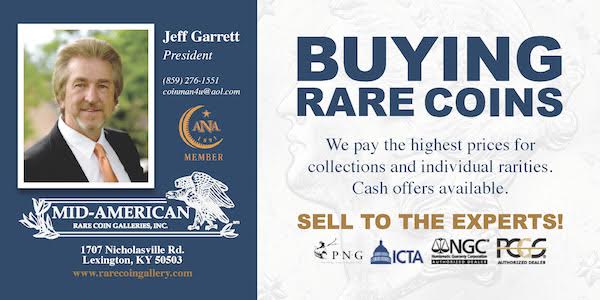
AUCTION SALE CATALOG COVERS AS ART
Newman Numismatic Portal Project Coordinator Len Augsburger submitted this note on auction sale catalog covers as art. Thanks. -Editor

The commercial nature of the auction business leaves little time for artistic concern, and the catalog covers of the larger firms typically feature only a basic array of the current offerings with a monochrome background. The auction catalog is ultimately a for-profit sales tool, though to be sure many resources are committed to accurate photography and authoritative descriptions. Non-profit organizations have more latitude as volunteer efforts don’t share the same commercial concerns. The auction sale catalogs of Early American Coppers (EAC) for many years incorporated artwork by Steve Fischer. The 1992 EAC sale, held in St. Louis, featured a catalog cover with St. Louis landmarks (the Arch, and Busch Stadium, seemingly filled with a small number of extremely large copper coins), while the 1997 Las Vegas edition depicts a showgirl dancing precariously on a large cent. Recently, Kagin’s has sponsored a contest for catalog cover design, including this September 2017 winning entry, designed by Sandra Deiana. Billed as Kagin’s Auctions Cover Artist Series, this is a welcome trend in the field of auction catalog publication.
Link to Early American Coppers auction sale catalogs on NNP:
https://nnp.wustl.edu/library/auctioncompanydetail/510682
THE BOOK BAZARRE
Heritage Auctions is seeking a talented cataloger for U.S. coins.If you are interested in joining the Heritage cataloging staff, contact Mark Van Winkle at mark@ha.com .
BOSTON MASONIC TEMPLE ENGRAVED HALF DOLLARS
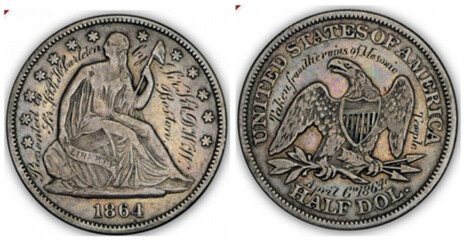
Mark Hotz writes:
I was interested to read in The E-Sylum the excerpt from Maurice Gould (1949) about the Boston Masonic Hall 1864 engraved half dollars. I obtained one of these nearly 30 years ago (from whom I cannot remember) as a curiosity for a small price. At the time, prevailing literature indicated that (as Gould said) a group of 1864 half dollars were recovered from the ruins of the Boston Masonic Temple, which was destroyed by fire in April 1864, and engraved as souvenirs.
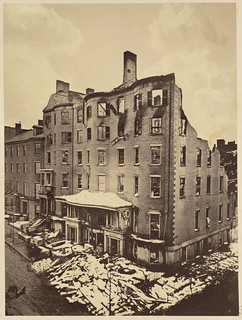 As time wore on, it became clear something was wrong with this conclusion. Specie payments had been suspended in 1861 - there were no 1864 half dollars circulating in Boston in April of 1864 and thus none could have found their way willy-nilly into the Temple. Some years back this mystery was solved when a newspaper article was located that indicated clearly that the melted and damaged Masonic silver accoutrements (hollow-ware, trophies, regalia) were recovered from the Temple. This silver was then sent to the Mint in Philadelphia and struck into 1864 half dollars (the only way one could get Civil War dated Philadelphia issues was to provide one's own silver to the Mint for such strikings). Some of the 1864 half dollars struck from coin silver from melted Masonic regalia were then engraved and sold as souvenirs, making this particular item one of the very first real commemorative coins struck at the Mint!
As time wore on, it became clear something was wrong with this conclusion. Specie payments had been suspended in 1861 - there were no 1864 half dollars circulating in Boston in April of 1864 and thus none could have found their way willy-nilly into the Temple. Some years back this mystery was solved when a newspaper article was located that indicated clearly that the melted and damaged Masonic silver accoutrements (hollow-ware, trophies, regalia) were recovered from the Temple. This silver was then sent to the Mint in Philadelphia and struck into 1864 half dollars (the only way one could get Civil War dated Philadelphia issues was to provide one's own silver to the Mint for such strikings). Some of the 1864 half dollars struck from coin silver from melted Masonic regalia were then engraved and sold as souvenirs, making this particular item one of the very first real commemorative coins struck at the Mint!
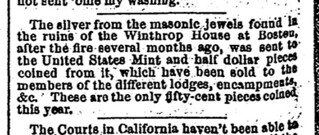
Newark Daily Advertiser Thursday, Oct 06, 1864 Newark, NJ Page: 2
Mark wrote an article about these coins in the February 1993 issue of The Numismatist (p188). It discussed his exchanges with Q. David Bowers and others about the pieces and the suspicions that Gould's story was incomplete. It doesn't mention the newspaper article, which wasn't discovered until later.
Julia Casey was able to quickly locate the newspaper article (illustrated above). Thanks! These are then indeed among the first commemorative coins struck at the Mint. But they weren't THE first. QUICK QUIZ: What commemorative coins were struck by the U.S. Mint prior to the Civil War?
Julia also located some related articles and images (linked below). Thanks! -Editor
To read the a New York Times article on the fire, see:
The Great Fire in Boston.; DESTRUCTION OF THE WINTHROP HOUSE AND FREEMASON'S HALL. - The New York Times
(https://www.nytimes.com/1864/04/10/archives/the-great-fire-in-boston-destruction-of-the-winthrop-house-and.html)
For a post-fire photo from the Boston Public Library, see:
Ruins of the Winthrop House, cor. Tremont and Boylston Sts. Burned 1864
(https://www.flickr.com/photos/boston_public_library/5579838288)
To read the earlier E-Sylum article, see:
NEWMAN PORTAL ADDS NENA NEWS
(https://www.coinbooks.org/v22/esylum_v22n03a12.html)

LINCOLN PRINTING COMPANY COIN BOARDS SOLD
Author and researcher David Lange submitted this update on the market for rare coin boards. Thanks! -Editor

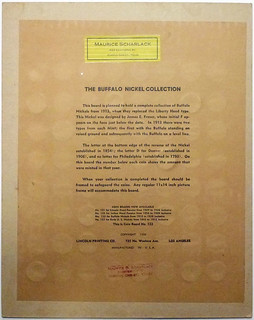
I try not to bother E-Sylum readers with too much coin board activity, but there was a significant series of listings this week that brought extremely strong prices. Three boards published by Lincoln Printing Company of Los Angeles in the late 1930s set new price records. The boards appear to grade VF-NM, an almost unheard-of level for this elusive publisher's boards, which typically are found grading VG-F or lower.
The three titles are for INDIAN HEAD PENNIES, LINCOLN HEAD PENNIES and BUFFALO NICKELS, respectively. The first is listed in my 2019 Value Guide at $65, yet it brought $96. The Lincoln Cent board, which is of the most often seen variety for this brand, realized $86 against a published value of $50 in VF. Most desirable was the very scarce board for Buffalo Nickels, and this brought $83 against a VF value of $65. I believe that it would have brought even more if it hadn't been the first of the three to sell. Once bidders became aware of the fierce competition the stakes were raised for the remaining two boards. As it turns out, I was the disappointed underbidder on all three, and I would have bid even more if I'd known how much someone else wanted them. I suspect that the winner placed "nuclear" bids ahead of time and was surprised at having to pay such high prices.
Since I already have these varieties in similar grades within my own collection, my reason for bidding so strongly was that they all feature one or more vendor stamps for Maurice Scharlack, the Texas coin dealer most famous for his extensive promotion of the 1922 cent varieties (No D and Broken D). Scharlack was the brother-in-law of Lincoln Printing Company owner Robert Ritterband, who caught the coin bug from him. To own a vendor-stamped board from Scharlack's inventory is like having a coin from the Garrett or Mickley Collections, at least to board collectors.
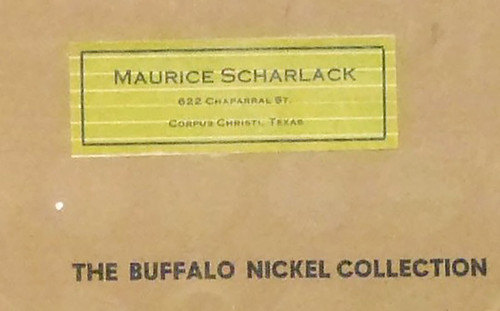

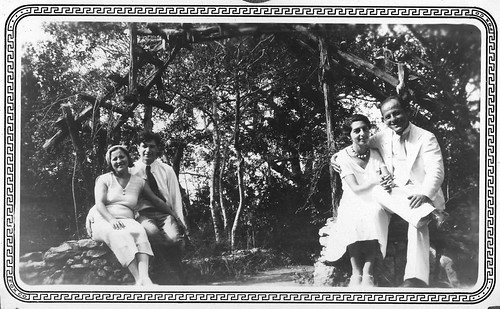
Robert and Jean Ritterband are at left, Maurice Scharlack and Nessye Levinson at right. It was taken Fourth of July, 1932 in San Antonio. This photo is courtesy of Robert Ritterband's younger son, Lawrence, with whom I keep in touch to this day.
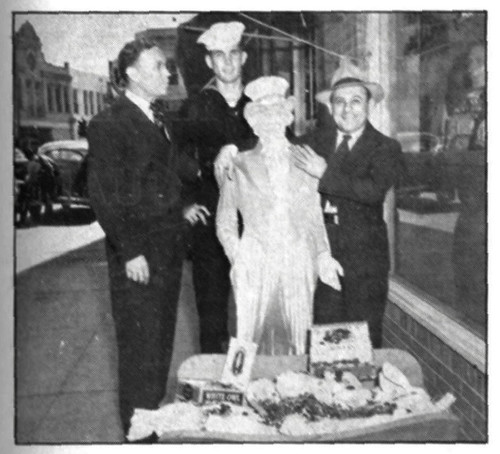
From the March 1943 issue of The Numismatist showing Maurice Scharlack turning in thousands of pennies to combat the shortage that resulted from the suspension of bronze coinage in May of 1942. Supplies ran very low before the zinc cents debuted early in '43.

NOTES FROM E-SYLUM READERS: JANUARY 27, 2019
Carl Subak Photo
Last week we had a note from Shanna Schmidt paying tribute to her mentor Carl Subak, who recently turned 100 years old. Here's an update from Shanna's newsletter #101. -Editor
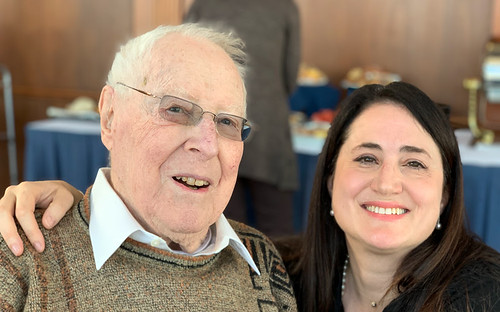
"As I promised, above is a quick picture I took last Sunday with Carl Subak at his 100th birthday party. Carl was surprised to see a small gathering of friends and family to celebrate his special day (which was actually a few days earlier). All the guests brought photos with to share with Carl. Jon told me that Carl loves photos now. He prefers photos on photo paper and not from an iphone. It was an interesting morning printing out (or trying to!) photos to bring to Carl. We rely so much on our phone now and the "cloud" that the days of printing them out are starting to be a thing of the past."
Printing out physical copies is never a bad idea. We all know what can happen to online storage over time. We gave my wife's Mom a printed album of photos from our recent family vacation and it's a great keepsake. -Editor
To read the earlier E-Sylum article, see:
HAPPY 100TH BIRTHDAY TO CARL SUBAK
(https://www.coinbooks.org/v22/esylum_v22n03a21.html)
Three Coins in the Fountain
CoinsWeekly Editor Ursula Kampmann writes:
When Frank Sinatra sung his song about the three coins in a fountain this tradition had existed for nearly a century. It was invented by a German archaeologist named Wolfgang Helbing. Here's a story we published a few years ago.
Thank you. Here's a link to the article. -Editor
To read the complete article, see:
Coins in the fountain well: Trevi Fountain in Rome
(https://www.coinsweekly.com/en/Coins-in-the-fountain-well-Trevi-Fountain-in-Rome/8?&id=122&type=a)
To read the earlier E-Sylum article, see:
TREVI FOUNTAIN COIN CONTROVERSY
(https://www.coinbooks.org/v22/esylum_v22n03a32.html)
Medieval Book Chest
David from the Banknote Den writes:
Though not related to numismatics, the History Blog has a pretty neat antique book-related item - a rare medieval book chest.

Cool. Thanks! The fifteenth century French Gothic coffer was acquired by the University of Oxford's Bodleian Libraries. -Editor
To read the complete article, see:
Bodleian acquires rare medieval book chest
(http://www.thehistoryblog.com/archives/54025)
For more information, see:
Bodleian acquires rare medieval book chest, now featuring in a new display
(https://www.bodleian.ox.ac.uk/news/2019/jan-22)
An Epirote Republic Didrachm
Barry P. Murphy
of NGC Ancients writes:
In the January issue of i>The E-Sylum, Jeff Wing asked about a piece of Greek paper money that featured a picture of an ancient Greek coin. The coin is a didrachm from the Epirote Republic. Attached is a photo on an authentic specimen.
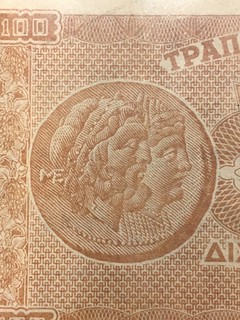
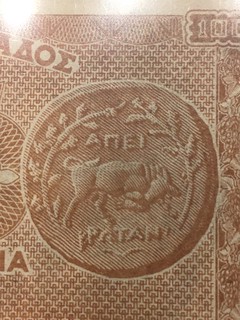
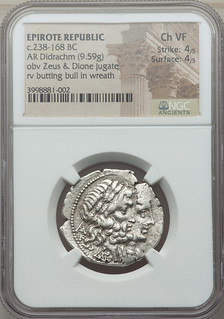
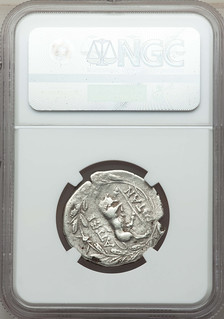
Thanks. It's great to see the original coin. -Editor
To read the earlier E-Sylum articles, see:
NOTES FROM E-SYLUM READERS: JANUARY 6, 2019 : Query: What Do These Images Represent?
(https://www.coinbooks.org/v22/esylum_v22n01a10.html)
ANSWER: WHAT DO THESE IMAGES REPRESENT?
(https://www.coinbooks.org/v22/esylum_v22n02a13.html)
More on the Penickle
John Mutch Googled the word "Penickle" and came up with an interesting definition from the Urban Dictionary. -Editor
To read the earlier E-Sylum article, see:
BOOSEL'S CAMPAIGN FOR THE 2 1/2 CENT COIN
(https://www.coinbooks.org/v22/esylum_v22n03a13.html)
Recoined Sol Undertype Thanks
Jeff Rock writes:
Please pass along my thanks to the three readers who made suggestions for the host coin of the 1696-A Recoined Sol. All three were good guesses and had some promise, but Julia Casey nailed it -- the legends match up pretty much exactly! Another feather in her cap - she has proven amazingly adept at tracking these sorts of things down! The funny thing is that I did look through the Swiss cantons in the Krause book but there was no match there - or at least not one that was plated or had the legend written out.
When I sent you the request I said that there would likely be someone in the group who would know the answer, and I am pleased to see that rang true - with nearly 6,000 collectors you have formed the 21st century equivalent of Selfridge's Information Bureau! I suspect that just this group could likely write or rewrite the entire history of numismatics, from every era and every country in the world! Pretty amazing, isn't it?
An amazing group indeed - take a bow, everyone! -Editor
To read the earlier E-Sylum article, see:
RECOINED SOL UNDERTYPE SUGGESTIONS
(https://www.coinbooks.org/v22/esylum_v22n03a15.html)

MAURICE FRANKENHUIS LETTER ON KARL GOETZ
Aaron Oppenheim writes:
I read last Sunday's E-Sylum issue with mention of Gunter Kienast's passing in 2017.
As a brief introduction, I am the grandson of Maurice Frankenhuis, a renowned collector of numismatics and memorabilia of the two World Wars; see ANS Quarterly Magazine Issue 3 of 2017 article by David Hill, 'Maurice Frankenhuis Built a Collection to Remember"
As I am digitizing the archives of the Frankenhuis Collection, I came across the attached letter he wrote to Margo Russell (Editor of Coin World) with his remarks. It dates back to 1966, quite interesting, given his intimate knowledge of the medals of Karl Goetz during the war. (My grandfather and I had extensive correspondence with Margo Russell, and numerous articles published about our activities and exhibits.)
I have attached a copy of his letter; feel free to share with E-Sylum readership, as I think it sheds another light on the subject.
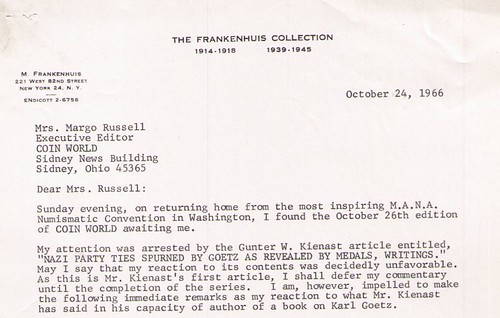
Thank you. Here is the main body of the Maurice Frankenhuis letter, to the best I've been able to OCR and transcribe it. It is dated October 24, 1966. -Editor
Sunday evening, on returning home from the most inspiring M.A.N.A. Numismatic Convention in Washington, I found the October 26th edition of COIN WORLD awaiting me.
My attention was arrested by the Gunter W. Kienast article entitled, "NAZI PARTY TIES SPURNED BY GOETZ AS REVEALED BY MEDALS, WRITINGS." May I say that my reaction to its contents was decidedly unfavorable. As this is Mr. Kienast's first article, I shall defer my commentary until the completion of the series. I am, however, impelled to make the following immediate remarks as my reaction to what Mr. Kienast has said in his capacity of author of a book on Karl Goetz.
As to the Lusitania catastrophe and the medal designed by Goetz, to which Kienast plans to devote "generous space" ... with "many unpublished statements of officials and Goetz himself, "the sinking of this ocean liner on May 7, 1915 was a barbaric act committed by Germany during World War I. There was no justification for commemorating this atrocity as if it were a heroic triumph. And yet that is the spirit in which Goetz conceived and executed the medal. How can Mr. Kienast condone its creation, when "everyone in the civilized world, be it an enemy citizen or a neutral, was shocked" when this diabolical "art" object appeared?
Your article has a sub-heading, "Artist Refused to Agree with Policies of Hitler." Kienast maintains that Goetz was compelled to work for the government, that he had to do it even to survive. In the actual record, however, there is no hint of such a conflict either in his conduct or his work. Even if he was not a member of the party, he served as one of its skilled propagandists, using his art to glorify first the German and then the Nazi atrocities. He translated the most heinous crimes and the most evil doctrines into an aesthetic, and therefore pleasing, motif.
I can readily back up the above with materials in my collection. A short analysis of Karl Goetz that I wrote years ago touches upon the Lusitania medal, his ready service to the Kaiser and the Fuhrer, and a work of his that involved me closely -- his design for a medal that, with bitter and cruel irony, depicted as an everlasting triumph the bombing and invasion of Holland by the Germans in May 1940. I have cause to disagree with Mr. Kienast when he writes, "The satire and sarcasm which is so dominant in his World War I medals is absent [in the Hitler period]. His style changed noticeably."
Mr. Kienast endorses Goetz's contention that he was not contaminated by Nazism, even though the latter proudly confesses his ties with Gebert who pandered the favor of Julius Streicher in order to promote Goetz's designs, notably his medal "Hitlerputsch." If ever there was an admission of guilt, it is contained in Goetz's boast that he "hit the nail right on the head" when Streicher showed pleasure with his work. This occurred in 1923, before Hitler took power, and when people were still free to exercise their right to dissent, But Goetz was evidently aiming to please the Nazis even then.
The beast he was trying to please was none other than the arch-racist publisher of "DER STUERMER, who steamed up the German people to hate the Jews with his lurid fabrications of "ritual murders," first published in a special edition in May 1934, together with the infamous caricatures. This issue aroused a world-wide outcry. The Archbishop of Canterbury wrote in the London Times (May 16, 1934): "It seems almost incredible that such a publication recalling the worst excesses of medieval fanaticism should have been permitted in any civilized country."
I leave it to your discretion about advising Mr. Kienast, at this time, concerning my findings as indicated in this letter.
To read the earlier E-Sylum article, see:
GUNTER W. KIENAST (1923-2017)
(https://www.coinbooks.org/v22/esylum_v22n03a09.html)
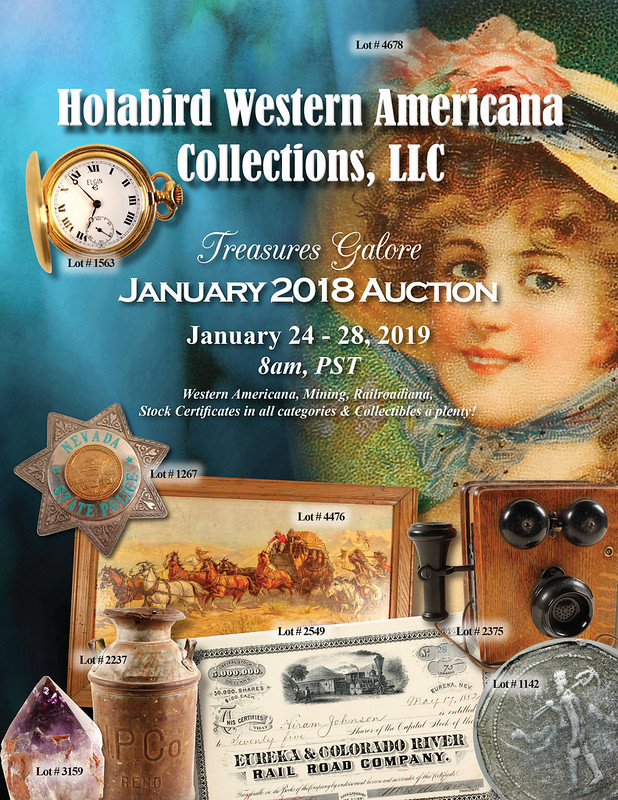
HOWLAND WOOD'S OMAR IBN SAID MANUSCRIPT
Gerry Tebben writes:Coins are everywhere. There's an article in Monday morning's Washington Post with a numismatic connection. The Smithsonian recently acquired an American slave narrative written in Arabic that was once owned by "prominent numismatist Howland Wood, an authority on Islamic coins." I know him mostly from the ANA's Best of Show award.
Numismatists are many-talented people, their interests and activities wide-ranging and interconnected in ways not readily apparent to others. Here's an excerpt from the article. -Editor
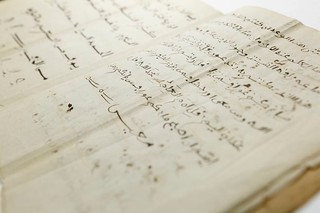 A dignified man in his 60s, he was small in stature, unfit for hard work and had been enslaved for almost a quarter-century. He spoke limited English.
A dignified man in his 60s, he was small in stature, unfit for hard work and had been enslaved for almost a quarter-century. He spoke limited English.
But his real name was Omar ibn Said. He had been a Muslim scholar in West Africa, where he was abducted in 1807. And in 1831, when few enslaved people in the United States could read or write, he wrote what is thought to be the only surviving slave narrative of its kind, in Arabic.
"It is very important ... for many reasons," Deeb said. "First ... it’s an autobiography written by a slave while he was still a slave. He’s not a freed man. He dies a slave." (Ibn Said died in 1864 in his 90s, in the midst of the Civil War, before slavery’s demise.)
The narrative and the collection passed through various hands and dropped out of sight for most of the 20th century, Deeb said.
According to journalist Jonathan Curiel, the collection resurfaced in Alexandria in a trunk found by descendants of prominent numismatist Howland Wood, an authority on Islamic coins, who had owned it.
To read the complete article, see:
When few enslaved people in the United States could write, one man wrote his memoir in Arabic
(https://www.washingtonpost.com/history/2019/01/20/when-few-enslaved-people-could-write-one-man-wrote-his-memoirs-arabic/)
For more about Howland Wood, here are excerpts from the web sites of the American Numismatic Association (ANA), American Numismatic Society (ANS), and Pete Smith's American Numismatic Biographies on the Newman Numismatic Portal. -Editor
American Numismatic Biographies
Born in New Bedford, Massachusetts. Received A.B. from Brown University in 1900. Married Elizabeth Eliot Marvin June 18, 1913. They had two daughters. She was the daughter of William T. R. Marvin, one time editor of AJN. He was in the photo engraving business in Boston. He moved to New York City in 1913 to work at the ANS.
Wood served as general secretary of the ANA 1905 to 1909; governor and chairman of the board of ANA 1909 to 1912. Secretary of the Boston Numismatic Society 1908 to 1913. Associate editor of The Numismatist 1909 to 1910. Associate editor and editor of the American Journal of Numismatics 1910 to 1920. He had been an assistant editor under William Marvin. Editor of Numismatic Notes and Monographs after 1920. Curator of the ANS museum January 25, 1913, to January 14, 1938. He received the Archer M. Huntington Award in 1920.
He served as president of the New York Numismatic Club 1930 through 1933. They honored him with one of their presidential medals. The design was by J. M. Swanson. It was the first club medal struck in nickel. Twenty pieces were struck in nickel with 11 more in silver and 42 in bronze.
He was a member of many numismatic organizations. He died at home in Flushing, Queens, New York. In 1969 he was elected to the ANA Numismatic Hall of Fame.
Author of Catalogue of United States and Colonial Coins in 1914. Author of The Gold Dollars of 1858 with Notes of the Other Issues in 1922 as ANS monograph 12; The Commemorative Coinage of the United States in 1922 as ANS monograph 16.
To read the complete article, see:
Howland Wood
Biography
(https://nnp.wustl.edu/Library/PersonDetail/2047)
ANS
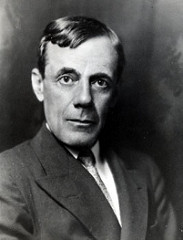 Howland Wood was born in New Bedford Massachusetts in 1877 and graduated from Brown University in 1900. Wood became a member of the American Numismatic Society in 1909. By 1913 he had been appointed Curator, remaining in this position until his death in 1938. At that time, the Society only maintained a single curator, with two assistants. Despite the limited size of the staff, during Wood's tenure the Society's collections increased significantly, from 50,000 to almost 200,000 specimens.
Howland Wood was born in New Bedford Massachusetts in 1877 and graduated from Brown University in 1900. Wood became a member of the American Numismatic Society in 1909. By 1913 he had been appointed Curator, remaining in this position until his death in 1938. At that time, the Society only maintained a single curator, with two assistants. Despite the limited size of the staff, during Wood's tenure the Society's collections increased significantly, from 50,000 to almost 200,000 specimens.
In addition to his curatorial duties, Wood also served as editor of the American Journal of Numismatics from 1910 to 1920. In 1920, Wood became only the third recipient of the Society's Archer M. Huntington Medal Award. Outside of the ANS, Wood also served as secretary to the American Numismatic Association from 1905 to 1909 and then as governor and chairman of the ANA's board from 1909 to 1912.
After Wood's death, Edward T. Newell (ANS President, 1916-1941) eulogized Wood as "the ideal Curator," noting that "Howland Wood was one of those rare geniuses who combined an inherited urge to collect, an insatiable curiosity as to the 'why' and the 'wherefore,' and an orderly mind which could not brook obvious gaps or disorderly arrangement."
To read the complete articles, see:
Wood, Howland, 1877-1938
(http://numismatics.org/authority/wood_howland)
Howland Wood curator correspondence and other material, 1913-1937
(http://numismatics.org/archives/ark:/53695/nnan0108
ANA
The Howland Wood Memorial Award for Best in Show Exhibit was first presented in 1952. It is named for one of the ANA’s longtime and dedicated numismatists. During Howland Wood’s lifetime he served the ANA as its general secretary, a member of the board of governors, and both editor of i>he Numismatist and curator of the collections. The Howland Wood award is the most prestigious award given to exhibitors by the ANA.
To read the complete article, see:
Howland Wood Memorial Award for Best in Show Exhibit
(https://www.money.org/american-numismatic-association-awards)
What an amazing numismatic career and legacy! -Editor
THE BOOK BAZARRE
VOCABULARY TERM: CAST MEDAL
Dick Johnson submitted this entry from his Encyclopedia of Coin and Medal Terminology. Thanks. -Editor
Cast Medal. A medallic item formed in a mold whose walls and cavities create the surface and relief of the design. Ancient medallions were cast – including those of Alexander the Great and Philip of Macedon in the east, and of Antoninus and Justinian in Rome. Considered medallions by historians, these decorative objects were used as gifts or rewards for services, though some may have served as military standards according to authorities. After the rise (and fall) of the Roman medallions, casting medallic items fell into disuse. It was with the invention of the art medal by Pisanello in 1439 that cast medals came into their own, suddenly and with many artists taking immediate advantage of this mew art medium. Medals have been cast ever since.
Several reasons prevail for the popularity of casting medals, then as now: (1) medals can be made in a size larger than what can be struck (limited by presses and pressures, see striking); (2) medals can be made in small quantities (dies and striking imply large productions); and (3) the artist can produce the entire work in his own atelier, where the artist controls the design, the composition, the fidelity of execution and the finish.
It is a rare instance that a national authority, or a national mint, will issue a cast medal in modern time. The great exception, however, is the Paris Mint, which not only issues cast medals but happily supports this art form.
The international medallic organization, F.I.D.E.M., also supports the art form. Their biannual exhibits showcase new medals, the cast products by artists from around the world, created in their own studio. From the creators of these cast medals often come the artists who are called upon to do the medallic commissions of both private organizations and national mints.
Also new coin and medal technology comes from this international group of artists on the cutting edge of numismatic technology. The first two-part medal and multi-part medal came from this group. The first self-supported medallic item, and, of course, all the medallic objects are created by these artists. It has been predicted that any new innovation in the coin and medal field will surely come from these artists. Not only do they provide a training ground for new artists, but also somewhat of a testing ground for new techniques.
History of cast medals. Every numismatic authority dates the medal from 1439, the year Pisanello made his tribute to John VIII Paleologus. His medal was cast and those that followed his creation were cast. We do have those ancient cast objects of Rome that historians call medallions – along with another class of mysterious objects, contorniates – but nothing more was made like these objects, so they remain a class onto themselves. It was Pisanello's medal that was the first, the forerunner, because of its artistic acceptance, other artists imitating his medallic creations and the continued development of art medals from this date.
Pisanello's fellow Italians were very productive in their early adoption of the cast medal. Matteo de Pasti (d1491) was one of the first. He copied Pisanello's technique of casting, but expressed his own style, as did most other early medalists.
The portrait was the most prominent device of the Renaissance. In fact, of the more than 650 Renaissance medals in the Kress collection, all but one are portrait medals. The lone medal bears a crowd scene on both sides (Kress 215). Reverse devices, as can be expected, range the gamut of medallic topics and events: mythology, coats of arms, men on horseback, birds, animals, buildings, symbols, landscapes, battles and such. All were cast.
Many of the medallic techniques and design themes were first devised for these Renaissance medals. This included the first coat of arms on a medal, the first wedding medal, the first background texture, the first square medal, the first oval medal, the first silhouetted medal, the first medal all inscription reverse (anepigraphic), the first spiral inscription, the first wide border, the first medal with a drill hole, and the first medal with a loop.
And the first trademark or logo, in its earliest form, the impresa. Invented by Pisanello, the impresa was an obscure design appropriate to the person portrayed on the medal. It evolved, until today the trademark is the opposite of obscure, it is distinctive and symbolic.
Thus casting a medal was employed, not only for the ease of conveying a design on a small metallic object, but also for the techniques of rendering that object into a medallic piece. Somewhat later goldsmiths added jewels and appliques to these objects. Some were even enameled to give them color. Thus cast medals were the first medallic art, they are still today. Some new technology has been added to making cast medals (see cast, casting), but cast medals are still the medium of active modern medallic artists.
Reference:
M3 {1967} Landowski.
Looking for the meaning of a numismatic word, or the description of a term? Try the Newman Numismatic Portal's Numismatic Dictionary at: https://nnp.wustl.edu/library/dictionary
Or if you would like a printed copy of the complete Encyclopedia, it is available. There are 1,854 terms, on 678 pages, in The Encyclopedia of Coin and Medal Technology. Even running two a week would require more than 19 years to publish them all. If you would like an advance draft of this vital reference work it may be obtained from the author for your check of $50 sent postpaid. Dick Johnson, 139 Thompson Drive, Torrington, CT 06790.
SAMUEL BARKER BOWLBY (1804-1864)
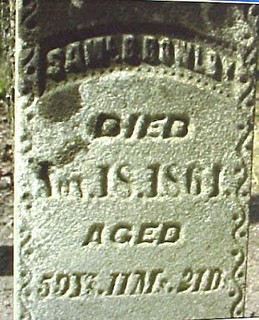 Samuel Bowlby is one of many Americans yet unrecorded to American numismatic history whose coin collection was sold after his demise leaving only a clerk's record of the account.
Samuel Bowlby is one of many Americans yet unrecorded to American numismatic history whose coin collection was sold after his demise leaving only a clerk's record of the account.
Samuel Barker Bowlby (1804-1864), was born on November 27, 1804 at Sussex, New Jersey, son of Samuel Barker Bowlby, Sr. (1782-1846), and Hulda Messene Bowlby (1784-1844).
In 1830 he married Abigail Bowlby (1812-1870), of Fayette County, Pennsylvania, were married in Ohio. About 1857, Bowlby moved to from Ohio to Illinois. In 1860, he is recorded as a farmer in Somerset Township, Illinois.
He died nine days before his 60th birthday on November 18, 1864, at Murphysboro, Jackson County, Illinois.
His significance in American numismatic history lay in what appears to be a coin auction sale in order to settle the estate of the deceased who was either a collector with a collection of gold and silver coins, or a hoarder of hard cash. How they were as a collection is not clear. It may have been simply a hoard of specie kept over the years, but the fact it was sold rather than merely deposited or spent at face value implies the coins in the hoard or collection were known to bear a premium above face value. This aspect provides evidence but is insufficient to suggest exclusively that it was a coin collection.
A large hoard amassed by a prosperous farmer over decades could simply appreciated as Old Tenor and would have had greater intrinsic value as bullion by weight. Either way this is of value to numismatic historians. This is the sort of item historians of coin auctions are looking for in order to expand our knowledge of nineteenth century numismatic coin sales. One would think coin dealers, jewelers, brokers, and collectors would have attend these.
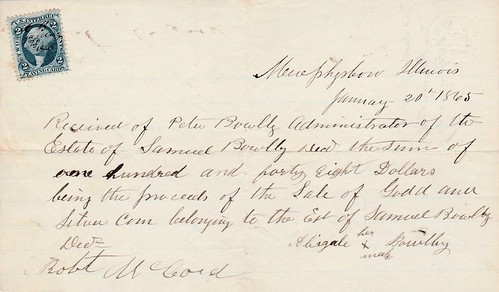
An original of the Clerk's file record of the sale of coins of the late Samuel Bowlby.
To read the complete article, see:
BOWLBY, SAMUEL BARKER, Jr.
(https://sites.google.com/a/numismaticmall.com/www/numismaticmall-com/bowlby-samuel-barker)
The entire inventory of the Lupia Numismatic Library is for sale. Individual items will be available before the remaining archives are broken up into parcels sold at philatelic auctions in the U. S. and Hong Kong. Check NumismaticMall.com frequently as dozens of new items with estimates will be posted daily until everything is sold.
All inquiries will be given prompt and courteous attention. Write to: john@numismaticmall.com .
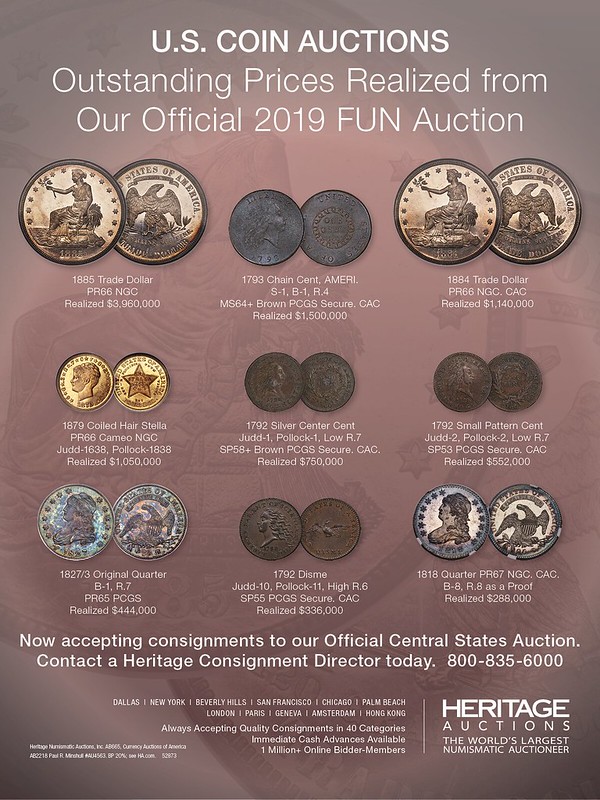
HARVEY STACK'S NUMISMATIC FAMILY, PART 36
Harvey Stack's blog series focuses on living in a numismatic family. Here is part 36. Thanks, Harvey! -Editor
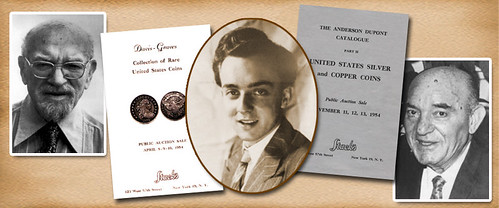
In 1964, the import regulations overseen by the Office of Gold and Silver Operations (OGSO) continued to cause difficulties within the coin hobby. In late spring, Stack's was offered an extensive and specialized collection of world gold coins that were to be sold in the United States. We received an itemized list of what it contained, about 900 gold coins including items from the 15th century up to the 20th century. We knew that it was an important collection that we would love to sell at public auction.
We copied the inventory, and I left for the Netherlands in late June 1964 to verify what was included. I was also to let Norman, who was working with me on the information, know what was important for the sale and what we would have to work to get imported. In Amsterdam, I was very pleased and excited to see how accurate the client had been in preparing the inventory. Every coin was listed, with country, mint (if applicable) and the catalog numbers referring to Robert Friedberg's Gold Coins of the World, a wonderful book that was used for over a decade to catalog and identify coins. It gave a lot of information about dates and denominations, but rarely, if ever singled out the rare dates from the common ones. The prices listed were often the cost of the commonest of any given design.
I called Norman and had him file the list for a license. Then I waited to hear back that we got the license, so I could supervise the packing of the collection and ship it back to New York. While I waited, I took a short holiday for two weeks to tour Europe. After that, Norman advised me that the license was never issued so we had to delay any shipment. I went home and waited another three weeks, with vague responses, but no license.
At that time, one of our catalogers, James C. Risk, was going to London for about three weeks on vacation. During World War II, Jim was a Naval Attaché in Moscow. From there he went to London for a period, before returning to the U.S., and working for Stack's Coin Galleries. Besides being an expert in foreign coins, Jim was very informed about military and national medals of Great Britain. He was a friend of Queen Elizabeth who had requested that Jim review all the medals, awards, ribbons and memorabilia stored in the Tower of London. He had worked there previously, again in the summer of 1964 and he returned to London to finish the job in 1965.
Rather than Norman or I making the trip back to Amsterdam, Jim offered to go there on our behalf once we got the import licenses. But after a month in London, Jim came home without the collection, because no license had been issued; it was still being worked on by the OGSO in Washington. We could not understand the delay, so we contacted our legal counsel, and had them make a legal demand for the license. The OGSO replied that they were "still working on preparing it."
Our attorneys recommended that we institute an action against the OGSO for the delay and we decided to proceed with this. Since I was most familiar with the case it was determined that I would represent the firm in any action taken. As with all cases where the government was involved, the paper work, and legal actions took time, and the first hearing was not until January 1965. The client agreed to wait, so we could sell the collection for him.
Meanwhile we continued our retail business, attended shows around the country, bought some collections, and waited to get the license. We continued our work with clients, including with Josiah K. Lilly. By 1964 he had amassed a collection of close to 5,000 coins of the world, a virtually complete set of United States gold coins, and had gathered a great representation of pioneer and territorial gold coins. We continued the custom of him visiting us on his way to and from Florida in the spring and fall, and I continued to deliver his new acquisitions to the Eagle's Nest.
A FRIEND of the QUEEN? You don't read that phrase very often. What a great calling card! -Editor
To read the complete article, see:
Harvey Stack Remembers: Growing up in a Numismatic Family, Part 36 January 22, 2019
(https://www.stacksbowers.com/News/Pages/Blogs.aspx?ArticleID=3257)
To read the earlier E-Sylum article, see:
HARVEY STACK'S NUMISMATIC FAMILY, PART 35
(https://www.coinbooks.org/v22/esylum_v22n02a19.html)

INTERVIEW: COIN GRADING MOGUL JOHN ALBANESE
In the inaugural January 2019 issue of his Rare Coin Strategies newsletter, publisher Mark Ferguson interviewed John Albanese, a founder or founding member of all three of the major U.S.-based coin grading services. With permission, here's an excerpt from the article's introduction. -Editor
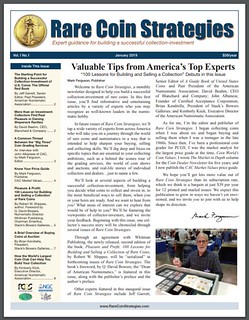 In 1986 a revolution in coin grading took
place when the Professional Coin Grading Service
(PCGS) began grading coins as an unbiased thirdparty service. While PCGS wasn’t the first—the
American Numismatic Association Certification
Service (ANACS) had been grading coins since
1972—PCGS was the first such service to encapsulate the coins it grades in tamper-resistant,
sonically-sealed plastic holders. Those holders soon
became known in the trade as "slabs." Initially, some
people resisted the innovation, others embraced it.
In 1986 a revolution in coin grading took
place when the Professional Coin Grading Service
(PCGS) began grading coins as an unbiased thirdparty service. While PCGS wasn’t the first—the
American Numismatic Association Certification
Service (ANACS) had been grading coins since
1972—PCGS was the first such service to encapsulate the coins it grades in tamper-resistant,
sonically-sealed plastic holders. Those holders soon
became known in the trade as "slabs." Initially, some
people resisted the innovation, others embraced it.
The concept caught on and in 1987 Numismatic Guaranty Corporation (NGC) was launched. Numerous copy-cat coin grading services also sprang up, but PCGS and NGC have dominated the market since their beginnings. The dominance of these two coin grading services is so widespread that even though the grading standards of other firms may be perfectly acceptable to most experienced numismatists, the vast majority of coin buyers prefer only coins graded by PCGS or NGC.
Two decades later, in 2007, a new service was launched: Certified Acceptance Corporation (CAC). Its purpose was different from those of PCGS and NGC. Because coins graded the same vary in condition from barely making a grade to nearly reaching the next grade, CAC was developed to identify and separate solid-for-the-grade and premium-quality coins from those that barely make a grade. CAC only reviews coins that have already been graded and encapsulated by PCGS and NGC. For those coins that meet CAC’s strict standards, a tamper-resistant, oval, green, CAC logo-sticker is placed on the PCGS and NGC holders of the coins it approves. This sticker has come to be known as a "green bean."
While CAC is not in the business of valuing the coins it approves, CAC has had a noteworthy bearing on the market values of the coins it approves. Wide-ranging data shows that most CAC-stickered coins sell for premium prices over like-kind coins, graded the same, that have not earned a coveted green bean. CAC coins also tend to sell more quickly than those that do not possess CAC stickers.
So, it is with this background that I interviewed John Albanese, the one individual who is like a common thread woven between the "Big Three" coin grading services: PCGS, NGC and CAC. John was part of the original group of about a half dozen coin dealers who founded PCGS in 1986; he formed NGC the following year, then sold it in late 1998; and he currently operates CAC, which he founded in 2007.
For more information on Rare Coin Strategies, or to subscribe, see:
http://www.rarecoinstrategies.com/

THE R. B. WHITE CHINESE COPPER COIN COLLECTION
Bruce W. Smith submitted this article about R. B. White and his collection of Chinese copper coins. Thanks! A much longer version was recently published in the Journal of East Asian Numismatics (JEAN). -Editor
During the 1970's and 1980's the most active collector of Chinese copper coins in the United States was R. B. White. He and his wife traveled all over America and the world looking for coins to add to his collection. Over the years he bought the Chinese copper coin collections of Edgar Mandel (who published a study of Kirin copper coins); Irving Goodman (noted for his collection of Chinese gold and silver coins); Jim Center (a San Diego collector); and Clifford Hewitt (an American mint technician who set up the Manila Mint in 1920 and the Shanghai Mint in the 1930's). In 1972 White and his wife spent five and a half weeks looking for coins in Singapore, Hong Kong, Taiwan and Japan. During November 1974 he spent two weeks in Europe where he bought a collection of cash coins weighing 138 pounds -- about 7700 coins, of which 3,000 were Korean. Following this, White became a major collector of Korean cash coins.
In 1990 White narrowed his collecting focus to machine struck Chinese copper coins. His collection of Chinese and Annamese cash coins was consigned to Taisei and sold in their February 1991 sale. The same sale contained several large lots of Korean cash, arranged by mint, totaling about 2,500 pieces. Though not marked as such, this was probably the sad end of White's Korean collection. His reference books, except for those on struck copper coins, were consigned to numismatic book dealer, George Kolbe, and sold in 1990. The fate of his collection of Chinese struck copper coins, reputed to be the best in the world, was unknown for nearly 20 years. Early in 2018 Stacks-Bowers announced they would be selling the Q. David Bowers / R. B. White Collection of Chinese Copper Coins.
Roby Byron White was born on 13 April 1919 and died 30 January 2006. He was a mechanical engineer by profession. From the early 1970's he lived in Sheldonville, Massachusetts, till 1994 when he moved to Strafford, New Hampshire. In addition to coins, he also collected old cars and model cars. His first contribution to numismatic literature was a 1972 article published in the India Asiatic Numismatic Society newsletter, reporting a newly discovered Sinkiang 3 Mace dragon coin dated AH 1307 (1890), similar to Kann 1040 (L & M 810). In 1975 he published a listing of six die varieties of the large size Fengtien 10 cash copper coin with center hole (Y81; CCC 319; Duan 2169-2175) in the journal T'ung Pao. In 1982 he contributed to East Asia Journal a list of revisions for Edgar Mandel's catalog of Korean cash coins, and a list of the rarest of Korean cash. White also authored an important article in The Numismatist March 1974 about a proof example of the American 20 cent coin of 1875 made at the San Francisco Mint. Only three examples of this coin were known to exist at that time.
White's first book and surely the most useful for cash coin collectors came out in 1976 under the title: "A Comprehensive Finding List of Chinese Cash -- From T'ang to the Republic 618 - 1912." The most important and the rarest work produced by R. Byron White was certainly: "The Vatican Collection of Chinese Coins (Biblioteca Apostolica Vaticana Medagliere)" which was published in 1976 as an 811 page, three volume boxed set. The first volume consists of the text and index (in Italian or Latin); the second volume contains plates of Chinese coins; while the third volume has plates of amulets and coins from nearby countries.
White obtained during his 1974 trip to Italy, a set of 8x11 inch photographs, originally made in the 1950's, depicting the text and the coins. These he offered to reproduce and bind and sell for $100 a set -- but only by subscription and only if he received at least 10 subscriptions. This would be the only published record of the Vatican's collection -- which consisted mostly of cast coinage but also contained some silver coins and struck copper coins. Where this collection came from and who laid it out and wrote the descriptions is unknown. And sadly only twelve copies of this catalog were printed -- two for the Library of Congress to secure the copyright, nine for subscribers, and one copy for White himself. White consigned his copy to the Kolbe sale, but it did not reach the minimum bid in 1990, and was put aside for sale at later time. One set of this work did sell in auction in 2017 for US$ 1600.
As early as 1971, R. B. White had already begun work on his own catalog of Chinese struck copper coins. He had approached Robert Saiber, a Plainfield, NJ coin dealer who specialized in Asian coins, for financial assistance on the book, but Bob was unable to help him. White then turned to Ward D. Smith, who had recently published books on world paper money, on Philippine coins and tokens, and Smith's own masterwork "Chinese Banknotes".
White wanted Smith to help in organizing, proof reading, and supplying Chinese characters to be used in the text. In those days, text was typed on a manual typewriter and Chinese characters were written in my hand where needed. Work on the book progressed slowly through 1976 and 1977, then Smith seems to have lost interest in the project. Ward Smith died in 1984. It was then that the writer obtained Smith's archive of papers, including an early draft of White's book. At that time it was written, partly by typewriter and partly by hand, on paper of various sizes and color. However letters received from White in the early and mid 1990's indicate he had nearly finished converting the text of the book to digital form on a computer. A 1995 letter to the writer says that White had filled 40 binders with photographs intended to go into the book.
Interestingly in June 1976, White had hired Canadian James Haxby, well known collector and writer on Canadian coins and tokens and North American paper money, to photograph his collection of Chinese copper coins. A set of prints was purchased by Krause Publications for use in its "Standard Catalog of World Coins," but after they arrived at the Krause office, a secretary cut the strips of prints apart and dumped them into a large box -- more than 1,700 photos. I don't know whether Krause ever used any of those photos due to the time and trouble required to re-assemble them correctly.
Many years later in 2009 the writer contacted the photographer and was able to purchase the original negatives of White's coins along with the rights to them. I estimate there are closer to 2,000 negatives. White's plan was to photograph obverse dies and reverse dies, then assemble them in the known combinations, producing perhaps 4,000 coins. It is unknown at this time whether Q. David Bowers obtained the White manuscript or the 40 albums of photos of the collection.
In August 1997, Michael Chou of Champion Auctions Hong Kong asked me to accompany him as an advisor for the purpose of visiting R. B. White at his New Hampshire home, to negotiate the purchase of White's Chinese copper coin collection. We looked over the collection for 15 hours and noticed a few things right away. First, some of the coins had been in a flood recently and were turning green, being now damaged, the grade written on the cardboard holder had little meaning. Second, many coins were clearly overgraded, which we felt was probably due to the seller's poor eyesight rather than an attempt to over value the coins.
Byron had prepared two copies of a printed inventory of the collection, giving one to Michael and one to the writer. During the examination, I wrote many notes in the margin of my copy of the inventory. When we had finished looking at the coins, Michael made a very strong six figure offer for the collection. At that time, Chinese copper coins were not bringing the wild prices Chinese silver coins could bring. The negotiation was short, a price was agreed on, then Michael and I returned to our motel to arrange payment. But first, White made us hand back the inventories he gave us. Byron wanted to be paid in gold, so Michael was on the phone arranging to have the gold delivered to this remote place in New Hampshire.
When all the arrangements were in place and we were preparing to leave, during some casual chatting, Mike mentioned that the timing was great because he would have time to display the coins in Hong Kong. At that point, White exploded. There was no way, he yelled, that he would allow his coins to be sold to communists or to anyone in mainland China. And since Hong Kong had just reverted to Chinese control that year, he must have felt just as much hostility toward Hong Kong as towards communist China.
Interesting. Loose lips sink ships - the sale did not proceed. -Editor

HERMITAGE MUSEUM EAST TURKESKTAN COIN CABINETS
Helen Wang of the British Museum publishes the Chinese Money Matters blog. A recent post describes two interesting cabinets of coins at the Hermitage Museum in St. Petersburg. -Editor
LAI Yu-chih: "Casting the Territory: A Study of Two Cabinets of Coins from the Qianlong Period in the State Hermitage Museum in St. Petersburg", Bulletin of the Institute of Modern History, Academia Sinica, Vol. 101 (2018), pp.1-62.
Article in Chinese, with English abstract, available online (open access) at http://www.mh.sinica.edu.tw/bulletins.aspx
Abstract
The State Hermitage Museum in St. Petersburg houses two cabinets of coins from East Turkesktan presented when the Qing empire conquered the territory in 1759. The museum asserts that these two cabinets were a diplomatic gift from Emperor Qianlong to Catherine the Great. The cabinets were both made of valuable Zitan wood and are covered with inscriptions in Chinese, Manchu, Mongolian, and Uighur scripts. Both cabinets contain three tiers of coins, 32 and 51 in total respectively, dating from 2 BCE to 12 CE.
Scholarship on the coins themselves has neglected the circumstanced of their gifting. However, the archives of the Qing court allow us to reconstruct when, how, and even why Emperor Qianlong ordered the coins to be collected and displayed. This article situates the analysis of these two cabinets of ancient Chinese coins in the context of both Chinese and European numismatic traditions, and offers an interpretation of the political meanings of Qianlong’s gift. Its visual and material aspects show Qianlong’s understanding of European practices and his use of non-verbal forms to promote his political agenda.
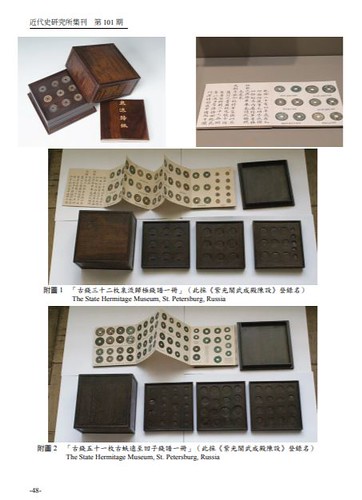
To read the complete article, see:
56. TWO CABINETS OF COINS FROM THE QIANLONG PERIOD IN THE STATE HERMITAGE MUSEUM
(https://chinesemoneymatters.wordpress.com/2019/01/02/two-cabinets-of-coins-from-the-qianlong-period-in-the-state-hermitage-museum/)
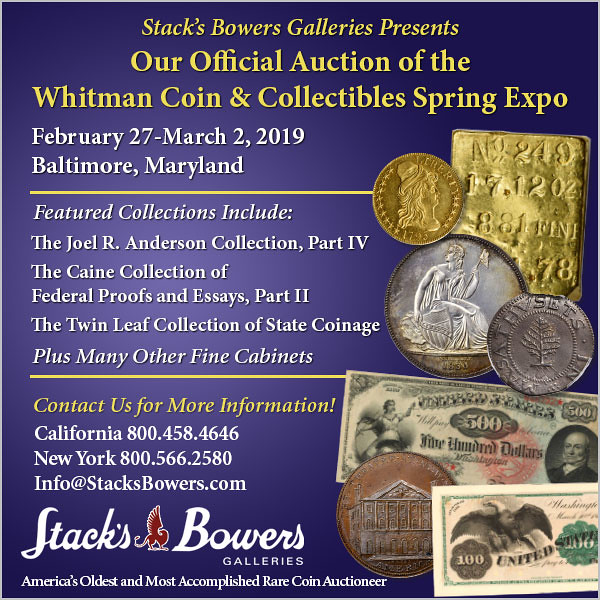
CHICAGO INDUCTS RACKUS INTO HALL OF FAME
The Chicago Coin Club has announced the second inductee into its Hall of Fame. -Editor
Dr. Alexander Michaels Rackus
Into its Hall of Fame
The Chicago Coin Club announces that the second person to be inducted into its Hall of Fame is Lithuanian numismatic specialist and author Dr. Alexander Michaels Rackus, 1893- 1965. His Hall of Fame citation has been published on the club’s Hall of Fame web page, www.chicagocoinclub.org/projects/hof.
Twelve Hall of Fame inductees have been selected. Each of the remaining ten will be announced at the rate of one per month, March through December, during the Chicago Coin Club’s centennial year, 2019.
The Chicago Coin Club was organized in 1912 as American Numismatic Association Branch No. 1, and reorganized under its present name in 1919. All are invited to join. To become a member you must attend a meeting and submit an application along with a membership fee of $20 ($10 for Junior membership). A first reading of your application will be held at this meeting, and a second reading at the next monthly meeting, following publication of your name in the club newsletter. (You are not required to be present for the second reading.) Upon membership approval, you will become a member.
The Chicago Coin Club holds monthly meetings in downtown Chicago, plus at major numismatic conventions such as Central States, with a speaker featured at every meeting except the annual auction, held at the November meeting.
Here is the text of the Dr. Alexander Michaels Rackus entry. -Editor
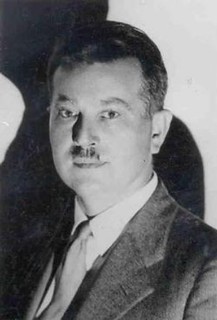 Dr. Alexander Michaels Rackus (Aleksandra Mykola Račkus), MD joined the Club in February or March 1919, becoming Charter Member No. 16. He served as Vice President 1920-21 and President in 1928. He was a frequent exhibitor and occasional speaker at Club meetings. Dr. Rackus kept up his membership in the Chicago Coin Club during the 1930s, returning several times from Europe and speaking at the June 4, 1941 meeting. But during World War II he was again away and let his membership drop, and though he returned to Chicago after the war he did not rejoin, but he did retain his A.N.A. membership the rest of his life.
Dr. Alexander Michaels Rackus (Aleksandra Mykola Račkus), MD joined the Club in February or March 1919, becoming Charter Member No. 16. He served as Vice President 1920-21 and President in 1928. He was a frequent exhibitor and occasional speaker at Club meetings. Dr. Rackus kept up his membership in the Chicago Coin Club during the 1930s, returning several times from Europe and speaking at the June 4, 1941 meeting. But during World War II he was again away and let his membership drop, and though he returned to Chicago after the war he did not rejoin, but he did retain his A.N.A. membership the rest of his life.
Immigrating to the U.S. from what was then Russia with his father in 1910, Dr. Rackus (June 7, 1893 – Oct. 9, 1965) earned his medical degree in 1922. Dr. Rackus primarily specialized in all things Lithuanian, forming the world’s largest collection of Lithuanian numismatic and ethnographic material (over 80,000 objects). In 1936 he sold it to the Lithuanian government at a nominal price, then served as Curator of the Historical section of the Museum of Culture in Kaunas from 1936 to 1938. During this period he was physician to the U.S. diplomatic legation there. For his contributions to Lithuanian culture, he was awarded the prestigious Order of Vytautas the Great, 3rd Class, in 1935, and the Medal of the Sagittarius Stars in 1939. After the war, he formed an important second collection of Lithuanian cultural material, which passed to the Balzekas Museum of Lithuanian Culture upon his death.
He was the author of a number of short articles published in The Numismatist between 1921 and 1934, primarily on various primitive money subjects (though his attribution of gold money to the Incas was mistaken). He also wrote two books, both bilingual (English and Lithuanian). The first, Guthones (The Goths) Kinsmen of the Lithuanian People. A Treatise on the Gothic Ethnology History of the Gothic Dominion in Italy and Spain, Numismatics, Language, and Proper Names (Chicago, 1929, 432 p.) is highly original, but later criticized by Visigothic authority George Miles for weak scholarship; it is not considered authoritative today. His second book, Cyclopedia of Lithuanian numismatics. Vol. 1: Primitive money in prehistoric times (Chicago: Balzekas Museum of Lithuanian Culture, 1965), issued shortly before his death, records considerable diverse material that he had collected over the years, for the benefit of future scholars. In addition, he published extensively on Lithuanian cultural matters. On the 125th anniversary of his birth, he was honored with the lead article in Draugas, the Chicago-based Lithuanian-American newspaper.
(1935 photo courtesy of Frank Passic, Albion, Michigan.)
To read the complete article, see:
Dr. Alexander Michaels Rackus
(http://www.chicagocoinclub.org/projects/hof/m02.html)
To read the earlier E-Sylum article, see:
CHICAGO INDUCTS RIPSTRA INTO HALL OF FAME
(https://www.coinbooks.org/v21/esylum_v21n52a18.html)
MORE ON THE CHICAGO COIN CLUB 1,200TH MEETING
Two issues ago Bruce Perdue gave us a first-person report on the 1,200th meeting of the Chicago Coin Club. Here's a lengthy excerpt from the press release with additional information and a great group photo. -Editor

January 9, 2019 the Chicago Coin Club celebrated a momentous occasion with the clubs 1200th meeting. This milestone was the first celebratory event the Chicago Coin Club will host as the club celebrates its 100th year anniversary. Founded in 1919 by a collective group of numismatists from both the Chicago Numismatic Society and the American Numismatic Association (A.N.A.) branch #1, a formal constitution and by-laws were created and the first official meeting of the Chicago Coin Club was held February 14, 1919.
Since 1919 the CHICAGO COIN CLUB has informed, nurtured, educated and supported coin collectors of the
greater Chicago and suburban areas. While its core membership is in the Chicago area it also reaches to
individuals throughout the United States and international. With its one hundred years the CHICAGO COIN
CLUB lives by the Latin motto
The 1200th Meeting combined a celebratory reception and social hour with food compliments of Chicago Coin Company, the standard club business reports then a Mega Show-and-Tell by club members who were asked to bring something of extra importance from their collection to share with the meeting attendees. As our clubs Latin motto says Docendo Discimus "We Learn By Teaching" club members did not disappoint with the Mega Show-and-Tell. Twenty five presentations were given covering items from Ancient to US coins, Numismatic and other literature and publications, family numismatic gifts and history, primitive money and more.
The reception time included a 100 year retrospective video presentation that played continuously highlighting events, club medals, past presidents, publications, conventions and other club history. All attending club members were asked to sign both a copy of the January 2019 CHATTER, the clubs monthly newsletter, and a $100 Dollar bill in "Short Snorter" fashion.
Forty two club members and four guests attended, including seven past club presidents, and in typical CCC fashion a reading was done for a new membership application. CCC membership applications must be done in person by attending a regular club meeting and submitting the application and dues in person. A club toast was given to "a Century of Sharing Numismatic Knowledge, to the members before us, to the members present and to the members who will follow".
For more information on the Chicago Coin Club, see:
http://www.chicagocoinclub.org/
To read the earlier E-Sylum article, see:
CHICAGO COIN CLUB 1,200TH MEETING
(https://www.coinbooks.org/v22/esylum_v22n02a23.html)

GREATEST U.S. MINT COINS OF 2010-2019
On January 15, 2019 CoinWeek published a nice article by Lou Golino on The 10 Greatest U.S. Mint Coins of the Decade, 2010-2019. While the topic is naturally subjective, I found it hard to disagree with any of his choices. See the complete article online - here are a couple of my favorites. -Editor
2014-W Eleanor Roosevelt $10 Gold Coin
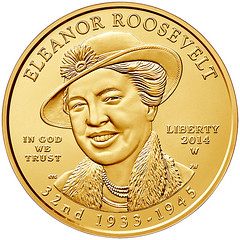 The $10 gold First Spouse series (2007-2016) is the only American coin series issued to honor a group of real American women, many of whom played larger roles in history than is commonly known. Many collectors of the program continue to believe that the series, which includes some of the lowest-mintage modern U.S. coins ever released, remains undervalued. But the market reality is that today almost every coin in the series trades in auctions and on the wholesale market for approximately its gold value, with just a small number that command a slight premium.
The $10 gold First Spouse series (2007-2016) is the only American coin series issued to honor a group of real American women, many of whom played larger roles in history than is commonly known. Many collectors of the program continue to believe that the series, which includes some of the lowest-mintage modern U.S. coins ever released, remains undervalued. But the market reality is that today almost every coin in the series trades in auctions and on the wholesale market for approximately its gold value, with just a small number that command a slight premium.
Wife of Franklin D. Roosevelt and niece of Teddy Roosevelt, Eleanor Roosevelt was an activist for justice and lectured and wrote widely. After the White House she served as a US delegate to the United Nations and the first chair of the UN Commission on Human Rights.
2017-W American Liberty $100 High-Relief Gold Coin and Silver Medals
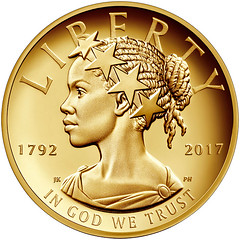 The 2015 American Liberty coin and 2016 medals of the same design were intended as the debut of a new series, but the Mint plans to introduce a new series called Virtues of Liberty in 2019. The 2015 issues were followed by the 2017-W American Liberty high-relief gold coin released on April 6 to coincide with the Mint’s 225th anniversary.
The 2015 American Liberty coin and 2016 medals of the same design were intended as the debut of a new series, but the Mint plans to introduce a new series called Virtues of Liberty in 2019. The 2015 issues were followed by the 2017-W American Liberty high-relief gold coin released on April 6 to coincide with the Mint’s 225th anniversary.
The coin received a lot of mainstream press coverage and was the first to feature an African-American female as Liberty on its obverse, shown in a left-facing profile wearing a crown of stars inspired by the Statue of Freedom that rests at the top of the U.S. capitol, a tribute to the emancipation of slaves. On the reverse appears an American eagle in flight.
Both are great designs, well executed. -Editor
To read the complete article, see:
The Coin Analyst: The 10 Greatest U.S. Mint Coins of the Decade, 2010-2019
(https://coinweek.com/modern-coins/the-coin-analyst-the-10-greatest-u-s-mint-coins-of-the-decade-2010-2019/)
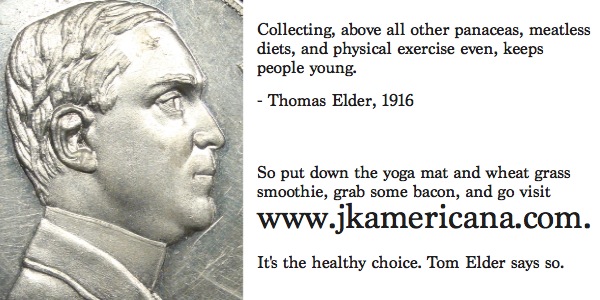
NUMISMATIC NUGGETS: JANUARY 27, 2019
Here's a selection of interesting or unusual items I came across in the marketplace this week. Tell us what you think of some of these. -Editor
1787 Immunis Columbia

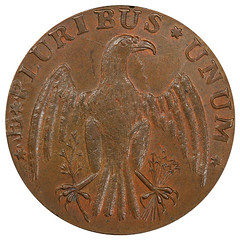
This issue was conceived as a pattern for the Continental Congress and later struck for circulation in New Jersey at Rahway Mills. This example is the finest by two points and is the only surviving example that displays mint red and perfect light/mid brown color. All the rest are either dark brown to black. This lone gem survivor is truly a work of art and even 66 understates its beauty and perfection. Important pedigree includes Richard Pickering, Catherine Bullowa, and Tony Terranova.
From the stock of Harry Laibstain Rare Coins. A Beautiful and important piece. -Editor
To read the complete lot description, see:
1787 IMMCOL COP PAT, EAGLE R *** PCGS MS66BN
(http://hlrc.com/Inventory/CoinViewer?id=869135001&c=23)
Wax Agnus Dei depicting Saint Rita

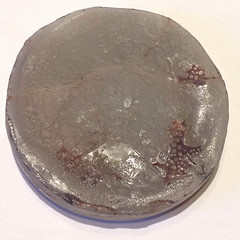
Wax Agnus Dei depicting Saint Rita
The moulds were prepared by mintmasters, namely by those who used to beat Papal medals, but waxes were imprinted by the Cistercian monks of the Abbey of San Bernardo alle Terme by Papal concession.
The Agnus Dei were extraordinary because, rather than being made with any kind of wax, they were crafted with the residue of the Easter candle of the Sistine Chapel and other Churches of Rome, which were personally blessed by the Pope in a ceremony that was very cherished by the faithful and held every seven years the week after Easter.
I was unfamiliar with these papal artifacts. Interesting. -Editor
To read the complete lot description, see:
Agnus Dei (1) - wax - 18th century
(https://auction.catawiki.com/kavels/23911869-agnus-dei-1-wax-18th-century)
1987 Robert Cronbach Nude Women Medal
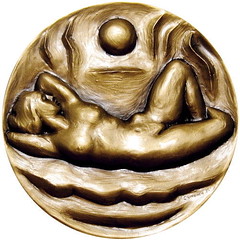
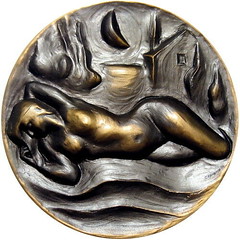
Society of Medalists medal number 116 from 1987 Bronze 73mm in new condition with original box and descriptive pamphlet of issue, a mintage of just 750 by artist Robert M. Cronbach sculptor. Sunrise and Moonrise with view of nude woman reclining under the sun and moon with the moon side being darkly toned as issued.
This one's from a Steve Hayden eBay listing. -Editor
To read the complete lot description, see:
1987 Society Of Medalists 73mm Bronze Medal Robert Cronbach Nude Women Box Paper
(https://www.ebay.com/itm/1987-Society-Of-Medalists-73mm-Bronze-Medal-Robert-Cronbach-Nude-Women-Box-Paper/202569141717)
2001 Al Gore Inaugural Specimen Medal
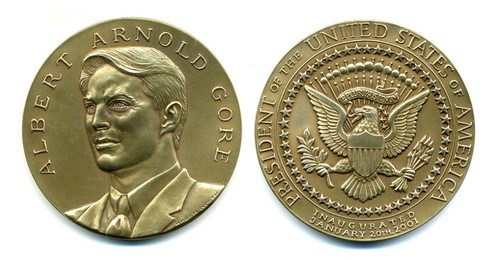
PROPOSED ALBERT GORE OFFICIAL INAUGURAL MEDAL, 2001. 69.7mm. Bronze. Karen Worth, Sc. Edge marked: HOPFFMAN MINT – CARMEL, CA. Uncirculated.
Obverse with a finely modeled bust of Gore to half left, his name, ALBERT ARNOLD GORE, around. The reverse legend, PRESIDENT OF THE UNITED STATES OF AMERICA INAUGURATED JANUARY 20TH, 2001 around a displayed eagle with stars as it appears on the Seal of the President of the United States.
This was the medal commissioned by the Hoffman Mint (makers of the 1993 Clinton Official Medal) to be entered into the competition for the Official inaugural Medal in the event that Al Gore won the presidency. About 3 unnumbered specimens were given to medals committee members in advance of the election and 15 numbered specimens were struck after the election when it was known that the President-elect was George W. Bush. This is one of the rare unnumbered examples We last sold an uncirculated specimen ("12") in our 2016 Auction #86 for $1265.00. $1750.00
This one's from Joe Levine's Mini Fixed Price List of Tokens and Medals #151. I asked, and yes, there's a struck 2017 Hillary Clinton inaugural medal, too. -Editor
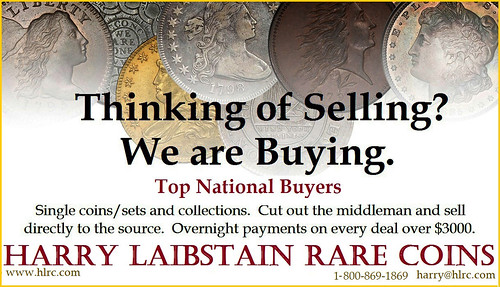
BUILDING THE NEW SAN FRANCISCO MINT
The San Francisco Chronicle published an article from their vault January 23, 2019 about the building of the current San Francisco mint in 1936. -Editor

The best-known U.S. Mint building in San Francisco is at Fifth and Mission streets, right across the street from the Chronicle building. The Old Mint is an imposing classical structure, but it’s been retired as a money-making plant for more than 80 years.
By the early 1930s, the building was too antiquated to meet the increased demand for coins. So the U.S. Treasury found a second location, at Duboce and Buchanan streets, where a natural rock promontory could function as another layer of security.
A search through The Chronicle’s archive uncovered photos of the construction of the New Mint in 1936, as well as the coin production work happening inside.
To read the complete article, see:
How San Francisco’s ‘modern’ mint rose from bedrock
(https://www.sfchronicle.com/chronicle_vault/article/How-San-Francisco-s-modern-mint-rose-from-13548898.php)
2019 RENO COIN CLUB MEDAL
Reno Coin Club President David Elliott submitted this announcement about his club's newest medal. -Editor

Our new Reno Coin Club medal celebrates the 50th anniversary of Eva Adams Director of the US Mint 1961-1969 and the moon landing July 16-24,1969 that relied on a rocket engine developed and tested in Palomino Valley, NV.
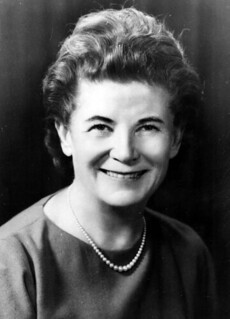 Eva Adams was a member of the Reno Coin Club until her death in 1991. Every year she
gave autographed dollars bills to the young members of the club. Eva Adams was born in Wonder, Nevada on
September 10, 1908. Her father worked for mining magnate George Wingfield, setting up hotels, bars, and
commissaries, which caused the family to move from camp to camp for years before Adams' mother insisted the
family settle down in Reno. Eva Adams graduated from Reno High School at age 14 and attended the
University of Nevada, Reno. After college, Adams moved to Las Vegas to become a teacher at Las Vegas High
School. Shortly thereafter, Senator Pat McCarran invited her to move to Washington to become his
administrative assistant. She worked for Senator McCarran until his death in 1954, Senator Ernest S. Brown,
and then Senator Alan Bible.
Eva Adams was a member of the Reno Coin Club until her death in 1991. Every year she
gave autographed dollars bills to the young members of the club. Eva Adams was born in Wonder, Nevada on
September 10, 1908. Her father worked for mining magnate George Wingfield, setting up hotels, bars, and
commissaries, which caused the family to move from camp to camp for years before Adams' mother insisted the
family settle down in Reno. Eva Adams graduated from Reno High School at age 14 and attended the
University of Nevada, Reno. After college, Adams moved to Las Vegas to become a teacher at Las Vegas High
School. Shortly thereafter, Senator Pat McCarran invited her to move to Washington to become his
administrative assistant. She worked for Senator McCarran until his death in 1954, Senator Ernest S. Brown,
and then Senator Alan Bible.
In 1961, President John F. Kennedy named Adams Director of the US Mint, and Adams subsequently held that office from October 1961 until August 1969. The end of silver coinage caused a coin shortage when people hoarded silver coins. She requested the coin press at the Nevada State Museum be sent to Denver to help make coins. The coin press then had a history of minting coins for Carson City, San Francisco, and Denver. We are proud to have her on our new medal. The Reno arch is to the right.
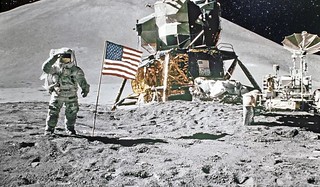 We are also celebrating the landing on the moon in 1969 and Nevada*s involvement. From 1962 to 1970,
Rocketdyne operated a vast facility on nearly 200 square miles by Pyramid Lake. Hidden from public view and
under tight security, engineers erected massive apparatus to test engines and thrusters that would be used on
Gemini and Apollo spacecraft, the lunar module and the space shuttle. The rocket that lifted Buzz Aldrin from
the moon came from the testing facility at Palomino Valley. The reverse is based on the "Eagle has Landed"
design found on the Susan B. Anthony and Eisenhower dollars with the dates of the moon landing above.
We are also celebrating the landing on the moon in 1969 and Nevada*s involvement. From 1962 to 1970,
Rocketdyne operated a vast facility on nearly 200 square miles by Pyramid Lake. Hidden from public view and
under tight security, engineers erected massive apparatus to test engines and thrusters that would be used on
Gemini and Apollo spacecraft, the lunar module and the space shuttle. The rocket that lifted Buzz Aldrin from
the moon came from the testing facility at Palomino Valley. The reverse is based on the "Eagle has Landed"
design found on the Susan B. Anthony and Eisenhower dollars with the dates of the moon landing above.
Dollar size medals sell for $65 for .999 1 ounce silver, $15 for antiqued brass and copper. Orders may be made at datbbelliotts@prodigy.net, David Elliott, 2845 Edgewood Drive, Reno, NV 89503. $5 shipping. Buy all three medals for $90 and free shipping. Call for info: 775 815-8625, but not orders. I am growing deaf and cannot hear names and numbers anymore. Order by e-mail or mail. We are very pleased with the quality, price, and turnaround time and help with design from Medalcraft in Wisconsin. They inherited many of the dies from the Northwest Territorial Mint that went bankrupt in Dayton, NV.
For more information on the Reno Coin Club, see:
http://www.renocoinclub.org/

MORE ON THE NANYANG, CHINA MINT SITE
The South China Morning Post published a photo we hadn't seen before of the 2,000-year-old mint site discovered in China in 2017. -Editor
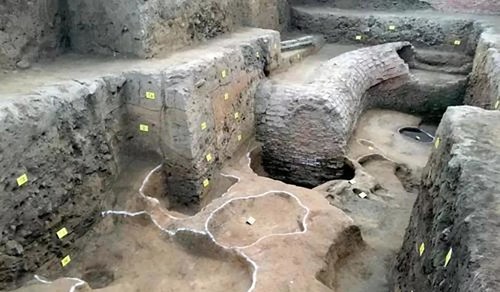
Archaeologists first uncovered fragments of ceramic coin moulds at the site when they were carrying out repairs after heavy rain in late 2017, according to media reports.
A joint team from the local and provincial cultural relics and archaeology institutes later found nine areas of relics and one kiln site with eight ash pits.
They also found copper coins, copper smelting slag, pottery shards, animal bones and a large number of coin mould fragments.
To read the complete article, see:
(https://www.scmp.com/news/china/society/article/2183056/ruins-2000-year-old-coin-workshop-found-central-china)
To read the earlier E-Sylum article, see:
2,000-YEAR-OLD MINT SITE UNEARTHED IN CHINA
(https://www.coinbooks.org/v22/esylum_v22n03a25.html)
THE DOLLAR IN REVOLUTIONARY AMERICA
The Journal of the American Revolution published an article back in 2016 that made the rounds this week in a forum for colonial coin collectors, and it sheds some additional light on the British system of pounds, shillings, and pence. -Editor
The United States dollar as we know it came into existence with the passage of the Coinage Act in 1792 which based the dollar on a decimal system and said that coins would be a certain number of one-hundredths of a dollar—half-dollar equals fifty cents, quarter-dollar equals twenty-five cents, etc. Prior to that, however, the dollar had a different structure.
There is a major point that must be understood in any discussion of Revolutionary War era economics. All parts of the United States today are connected within a single economy. Prior to the completion of independence in the 1800s, however, America consisted of hundreds of individual economies ranging from small villages to large groups of merchants—the latter with close connections to the economies of Europe. Being quite limited in scope, most of these systems operated independently of each other and experienced minimal, if any, influence from the outside world. Each set values and prices had a basis in the local conditions. The coming of war forced the nascent United States to attempt to develop our first true national economy.
In the eighteenth-century western world, the economies of all countries relied to some extent on silver and gold coins (called "specie" or "hard money") minted by each country. England and the British colonies based their system on pounds, shillings, and pence—one pound (1£) consisted of twenty shillings (20s) and each shilling had twelve pence (12d). A common form of expressing amounts in this system displayed £.s.d and this format will be used in this article.
To our modern decimal-oriented monetary mind this may look to be a complicated system but it does have a distinct advantage. Comprised of 240 pence, a pound can be evenly divided by several numbers—2, 3, 4, 5, 6, 8, 10, 12, 15, 16 and so on. Try dividing a dollar of one-hundred cents by 3, 6, 8, 12, 15, 16, etc.—it cannot be done without some fraction left over. In a society without calculators conveniently at hand, having money that could be quickly and evenly divided in many different ways made life a bit simpler.
David Pickup writes:
I was interested to read the guide to the British system. It was not complicated at all! Children just learnt 12 pennies to the shilling and twenty shillings to the pound just as you knew twelve inches to a foot and three feet to the yard. It was the decimal money that was complicated! Twenty and twelve easily divide into halves and quarters but ten does not. This meant there was no equivalent for the sixpence and threepence coins which continued in use. The old sixpence was not demonetised until 1980.
Nearly fifty years on some people have not got used to decimals!
To read the complete article, see:
THE DOLLAR IN REVOLUTIONARY AMERICA
(https://allthingsliberty.com/2016/09/dollar-revolutionary-america/)
To read the earlier E-Sylum article, see:
HOW BRITISH MONEY WORKED
(https://www.coinbooks.org/v22/esylum_v22n03a26.html)

CANADA D-DAY COIN SOLDIER IDENTIFIED
Research has uncovered the identity of the mystery soldier depicted on Canada's 2019 silver dollar commemorating the 75th anniversary of D-Day. -Editor
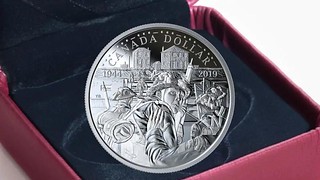 A reassuring pat on the shoulder and a glance back at a fellow soldier. A fleeting act of camaraderie shared between two Canadian soldiers just seconds before they joined their comrades and stormed Juno Beach in France on D-Day.
A reassuring pat on the shoulder and a glance back at a fellow soldier. A fleeting act of camaraderie shared between two Canadian soldiers just seconds before they joined their comrades and stormed Juno Beach in France on D-Day.
"We felt that that image certainly represented sort of the soldiers of the day. There was a lot of meaning in that image, it's very powerful," said Ian Graham with the Royal Canadian Mint. That moment recorded on grainy black and white film lasted only a second, but it was enough to inspire the design of the Royal Canadian Mint's 2019 proof silver dollar, commemorating the 75th anniversary of D-Day.
But no one knew the identity of the soldier who was glancing back, until now.
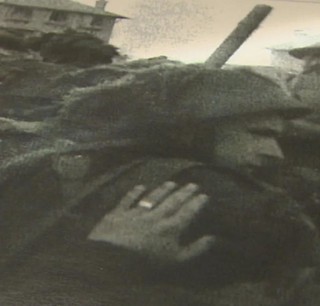 Researchers working with the mint have identified the soldier as Pte. George Herman Baker of Liverpool, N.S. He was a member of the No. 3 Platoon, A Company of the North Shore Regiment.
Researchers working with the mint have identified the soldier as Pte. George Herman Baker of Liverpool, N.S. He was a member of the No. 3 Platoon, A Company of the North Shore Regiment.
He was 20 years old when he headed out to Juno Beach. He survived the war, and moved back home and raised a family. Baker died in 2003 at age 80.
On Tuesday in Liverpool, the mint presented Baker's daughter, Karen McLeod, with one of the coins inspired by her father's image.
"When they had the 50th anniversary of D-Day, I remember him mentioning about the landing and how the soldiers had died. It was awful. You had to walk over people and you couldn't do anything to help them."
Baker carried grim reminders of the war with him. He had shrapnel embedded deep in his shoulder and McLeod remembers pieces of it coming out even years after the war.
To read the complete article, see:
Mystery D-Day soldier featured on silver coin ID'd as Nova Scotia man
(https://www.cbc.ca/news/canada/nova-scotia/coin-soldiers-military-wwii-d-day-royal-canadian-mint-1.4988054)
SECRET SERVICE SHUTDOWN CHALLENGE COIN
Kellen Hoard and others passed along notice of the challenge coin created by the U.S. Secret Service commemorating the recent U.S. government shutdown that had agents working without pay for over a month. -Editor
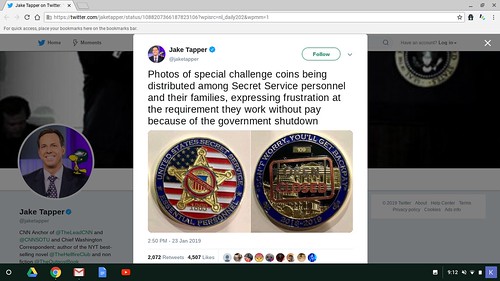
Jake Tapper CNN tweet
Special challenge coins are being distributed among US Secret Service personnel and their families, who are expressing frustration at the requirement they work without pay during the partial government shutdown.
The coins are paid for by agents or other personnel on their own -- they are not official and use no government money. "DON'T WORRY, YOU'LL GET BACKPAY," is printed on one side of the coins, according to a photo obtained by CNN's Jake Tapper. The other side has "UNITED STATES SECRET SERVICE" and "ESSENTIAL PERSONNEL" printed on it.
Challenge coins are historically collectable pieces of recognition that originated in the military, but have recently become more popular with civilian agencies.
Yeah, we know coins aren't "printed". And these aren't coins either, they're commemorative medals, but "challenge coin" is the commonly accepted term. Neat topical item. I'm glad everyone can get back to work for a bit and collect their back pay. A number of my friends and neighbors had been affected by this. -Editor
To read the complete article, see:
Secret Service members create challenge coin for working without pay
(https://www.cnn.com/2019/01/23/politics/challenge-coins-secret-service-government-shutdown/index.html)
HONG KONG BANKNOTE EXHIBIT
Over on the Numismatic Bibliomania Society Facebook page Stephen Pradier shared a link to a gallery of eleven photos from the South China Morning Post of an exhibit of banknotes at HSBC's archive center in Hong Kong. Thanks. -Editor
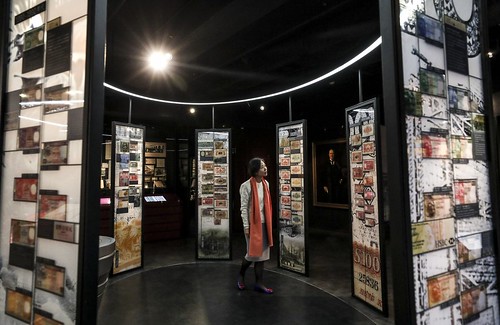
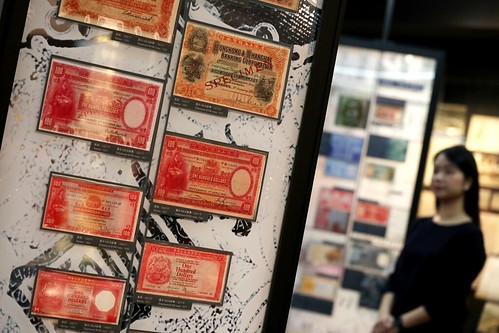
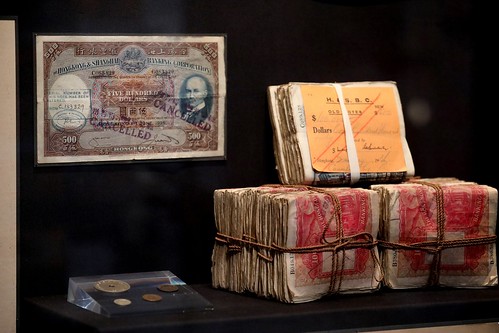
To view the complete gallery, see:
Hong Kong history captured in old HSBC banknotes
(https://www.scmp.com/photos/today-photos/2183200/hong-kong-history-captured-old-hsbc-banknotes)
To visit the NBS Facebook page, see:
https://www.flickr.com/photos/coinbooks/
WSJ ARTICLE ON COMMUNITY CURRENCIES
Gerry Tebben forwarded this January 18, 2019 Wall Street Journal article about Brixton Pounds notes and other community currencies in Britain. -Editor
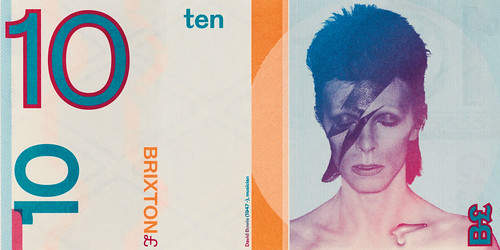
One vending machine stands out in Brixton Market, a fast-gentrifying spot in south London. The prices are unusually high, £10 on the top row and £5 beneath. But then the goods for sale are unusual too: neatly rolled "Brixton pounds," with peace signs in place of zeros and singer David Bowie in place of the Queen.
Brixton is one of several British communities, from the city of Bristol to the sleepy Lake District national park, experimenting with their own currencies. Their goal: to provide a means of supporting local businesses and build a sense of community. If it helps reduce dependence on traditional banks and cuts down on the carbon emissions that come with trading long distances, all the better.
"It’s money that sticks to the area," said Madeleine Boomgaarden, who manages the project in Brixton.
Such local currencies are essentially vouchers, transferable back into standard British pounds at a one-to-one rate. In many ways, they are cousins of high-tech cryptocurrencies, which aim to replace fiat money with a decentralized payment system independent of traditional banks.
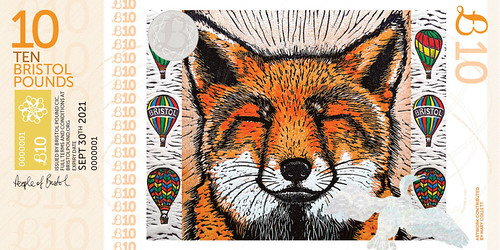
The teams behind each currency say the notes are designed with security in mind. The bills in Brixton are produced by a specialized printer with diamond-embossed security paper and gold foil numbering.
But the Bank of England has flagged concerns that local money can undermine confidence in official bank notes, particularly when efforts fail.
"Brexit shows how exposed national currencies are," said Ms. Boomgaarden. "So if sterling falls through the floor in March, Bowie notes might be what everyone’s after."
To read the complete article (subscription required), see:
Your Bowie Is No Good Here, But He’ll Pay for a Zumba Class in Brixton
(https://www.wsj.com/articles/your-bowie-is-no-good-here-but-hell-pay-for-a-zumba-class-in-brixton-11547814606)
LOOSE CHANGE: JANUARY 27, 2019
Here are some additional items I came across in the media this week that may be of interest. -Editor
ANS Medallic Art Company Archives
On January 21, 2019 Joshua McMorrow-Hernandez of CDN Publishing published a nice piece on the ANS acquisition of the Medallic Art Company archives. Here's an excerpt - see the complete article online. -Editor
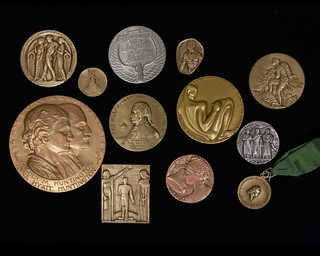 "The American Numismatic Society has never previously engaged in such an ambitious project, nor has any other museum or society undertaken a similar project of these proportions. The only comparable project was the acquisition of the American Bank Note Company, which was disbursed without any proper recording," she said. Acquiring such an expansive collection without knowing exactly what it contains leads to inevitable surprises. "Among them is the list of famous artists involved with MACO at one time or another, which just keeps growing," she noted.
"The American Numismatic Society has never previously engaged in such an ambitious project, nor has any other museum or society undertaken a similar project of these proportions. The only comparable project was the acquisition of the American Bank Note Company, which was disbursed without any proper recording," she said. Acquiring such an expansive collection without knowing exactly what it contains leads to inevitable surprises. "Among them is the list of famous artists involved with MACO at one time or another, which just keeps growing," she noted.
Another surprise? Contents of the collection’s photographic digital archives, which record the recipients of various medals. "Here we have real contrasts," commented Wartenburg. "On the one hand, we have such famous people such as Captain Rostron of the Carpathia receiving the Congressional Medal of Honor for rescuing survivors from the Titanic. On the other hand, we have an award for Karl Maier, a student born in Germany and since the death of his parents cared for by an uncle in San Francisco; he is shown with the American Legion medal he won for ‘service, courage, leadership, scholarship and honor.’
To read the complete article, see:
American Numismatic Society Acquires Historic, Extensive Medallic Art Company Archives
(http://blog.greysheet.com/american-numismatic-society-acquires-historic-extensive-medallic-art-company-archives/)
Interview: Dealer Greg Marcus
Editor Joshua McMorrow-Hernandez of CDN Publishing interviewed dealer Greg Marcus for a January 23, 2019 article. -Editor
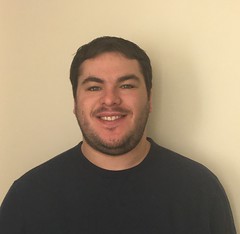 Greg Marcus isn’t your ordinary 24-year-old numismatist. This young vest pocket genius from Colorado has been a full-time coin dealer since May 2016, turning his initial investment of $6,000 – which he accumulated from selling his coin collection – into a million-dollar business. And while he’s a self-made businessman, he’s never forgotten his middle-income roots. He’s stayed close to his family and friends, who instilled in him a strong work ethic that urged him to aim high and to remember that he could "always do better." Marcus, who operates Front Range Coins & Currency from his home base in Colorado and attends several coin shows around the country each year, recently chatted with me to share some of his comical experiences, discuss lessons he’s learned, and offer the wisdom he’s gleaning as his thriving business continues growing.
Greg Marcus isn’t your ordinary 24-year-old numismatist. This young vest pocket genius from Colorado has been a full-time coin dealer since May 2016, turning his initial investment of $6,000 – which he accumulated from selling his coin collection – into a million-dollar business. And while he’s a self-made businessman, he’s never forgotten his middle-income roots. He’s stayed close to his family and friends, who instilled in him a strong work ethic that urged him to aim high and to remember that he could "always do better." Marcus, who operates Front Range Coins & Currency from his home base in Colorado and attends several coin shows around the country each year, recently chatted with me to share some of his comical experiences, discuss lessons he’s learned, and offer the wisdom he’s gleaning as his thriving business continues growing.
To read the complete article, see:
Lighter Shade Of Grey: Young Dealer Turns 6 "Ks" Into 7 Figures In 2 Years
(http://blog.greysheet.com/lighter-shade-of-grey-young-dealer-turns-6-ks-into-7-figures-in-2-years/)
Circulating Counterfeit Quarters
Over on the Collector's Universe Forum there was a discussion about counterfeit quarters found in circulation in New York City. -Editor

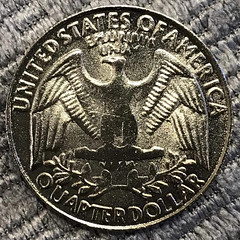
To read the complete discussion thread, see:
Counterfeit Quarters Found in Circulation in New York City
(https://forums.collectors.com/discussion/1013140/counterfeit-quarters-found-in-circulation-in-new-york-city)
CFA Franc Controversy
Dick Hanscom forwarded this BBC News item about an accusation that the CFA franc is harming the economies of former French colonies in Africa. -Editor
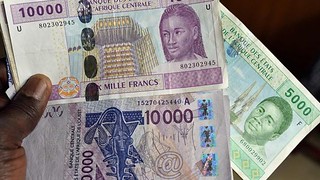 Many of the concerns about the CFA franc relate to how it limits the economic levers African countries can use - that they can't set their own interest rates, for instance.
Many of the concerns about the CFA franc relate to how it limits the economic levers African countries can use - that they can't set their own interest rates, for instance.
The system is designed to make it easier to obtain international currencies needed for trade.
And the reserves are also guaranteed by the French central bank - although this facility is rarely called upon.
But it's difficult to say whether the arrangement between the 14 countries and France has had a detrimental impact on their respective economies.
To read the complete article, see:
African migration: Is the CFA franc forcing people to leave?
(https://www.bbc.com/news/world-africa-46960532)
FEATURED WEB PAGE: THE EVOLUTION OF BANKING
This week's Featured Web Page is suggested by John and Nancy Wilson, who write:Here's a nice page on the Investopedia site titled: A brief history of banking over time! It also has some great links. We found it while researching a famous personality.
https://www.investopedia.com/articles/07/banking.asp

